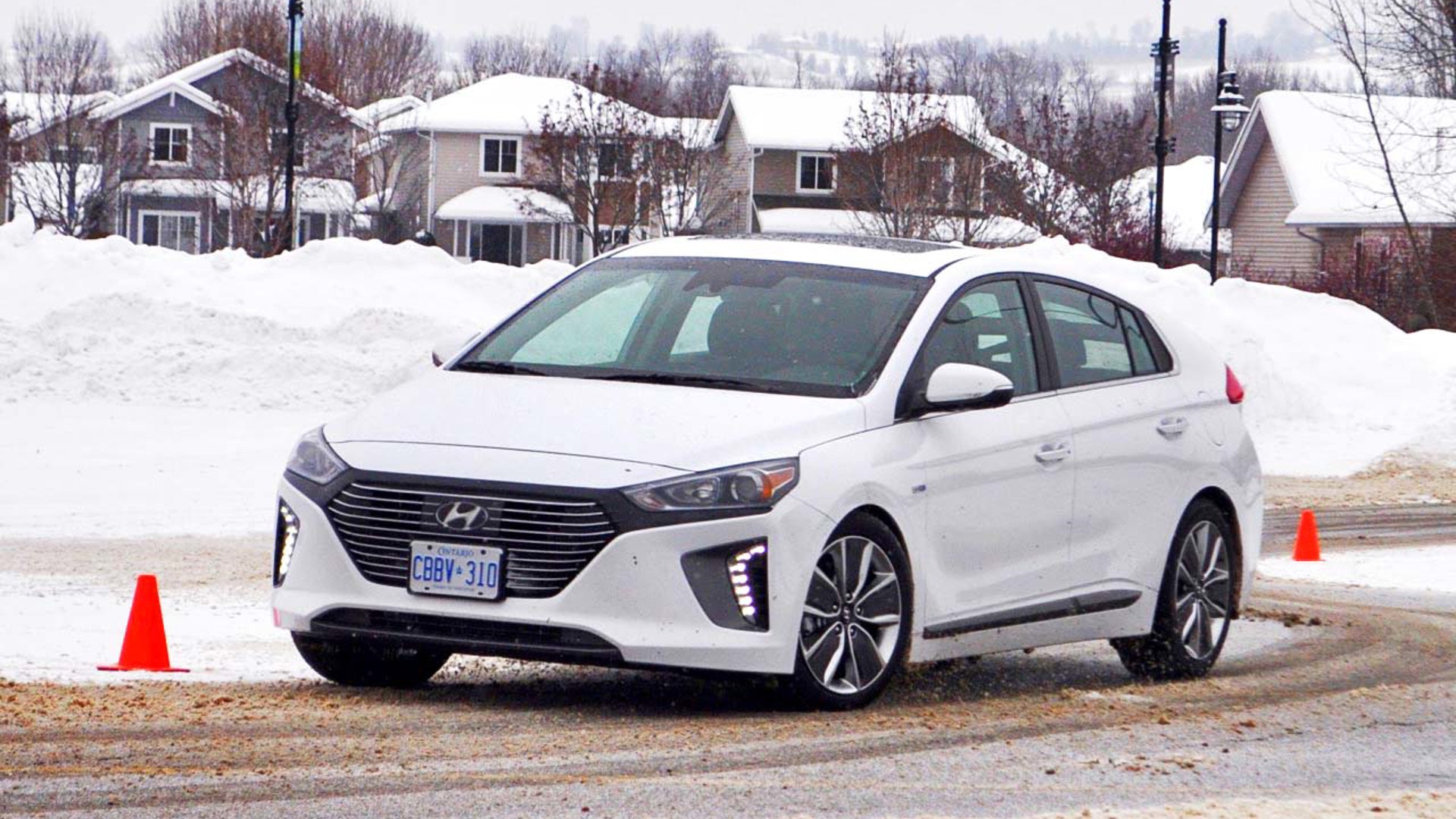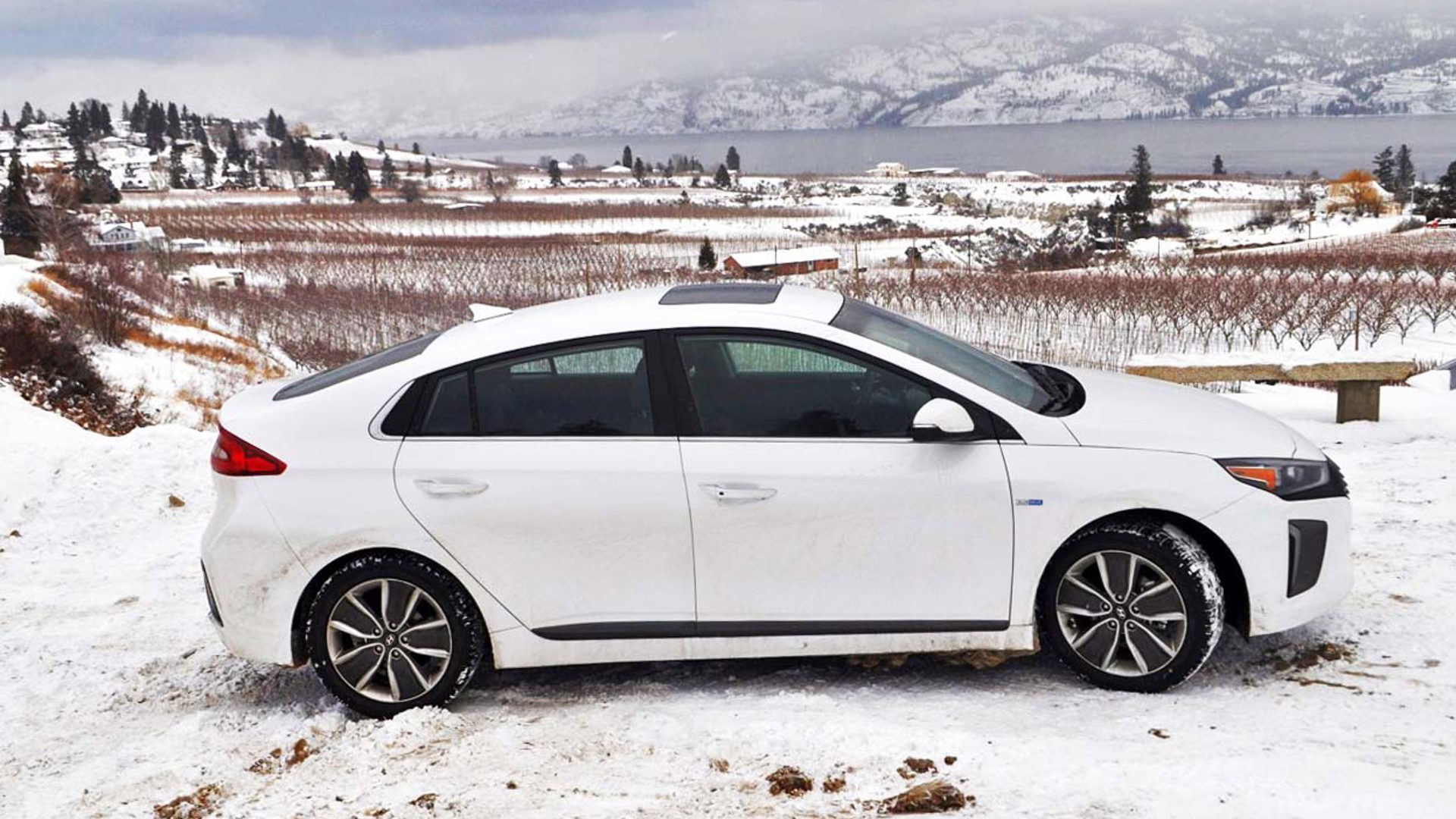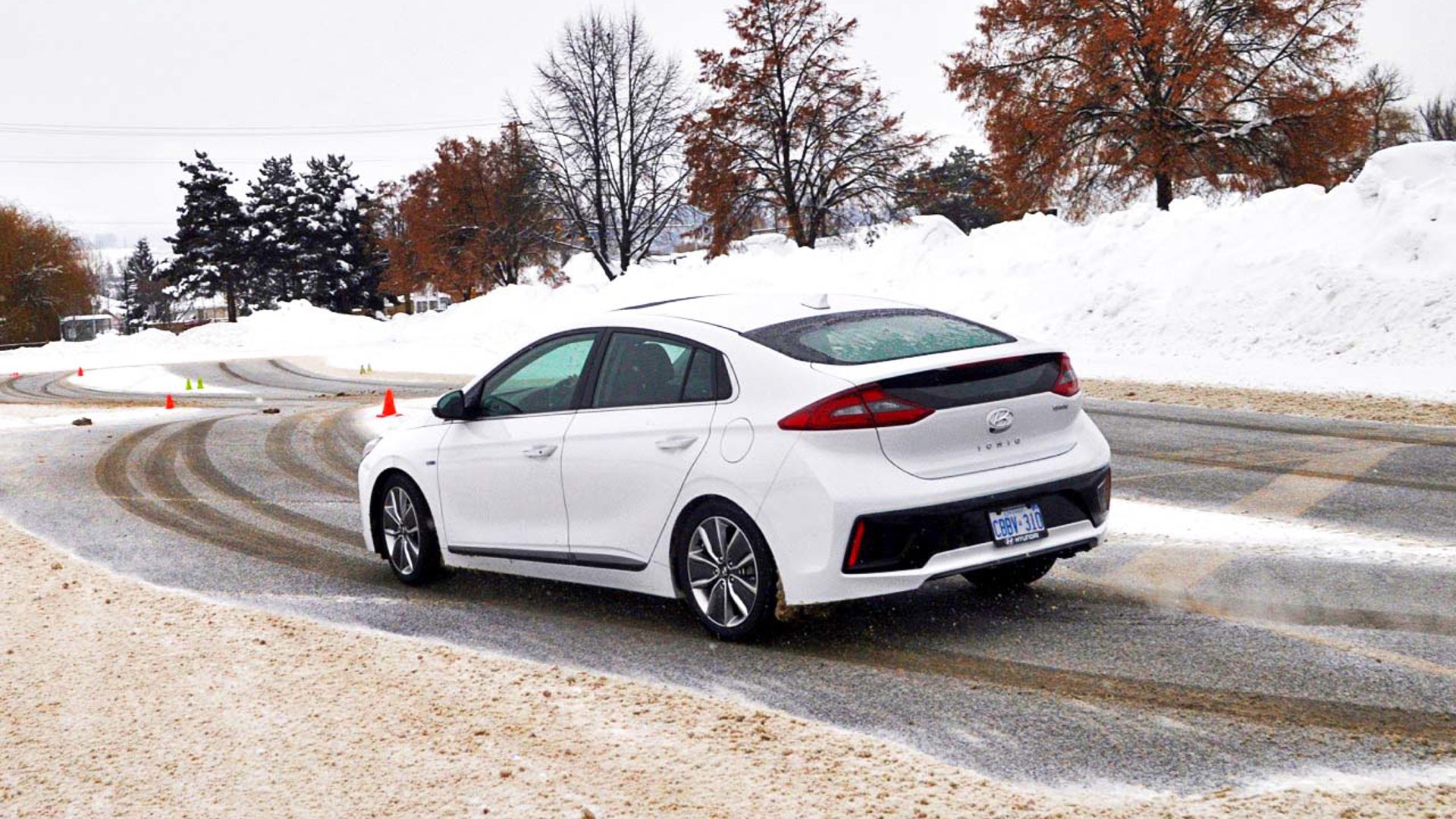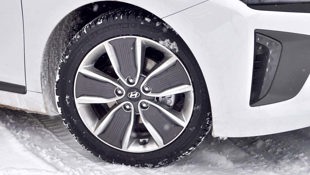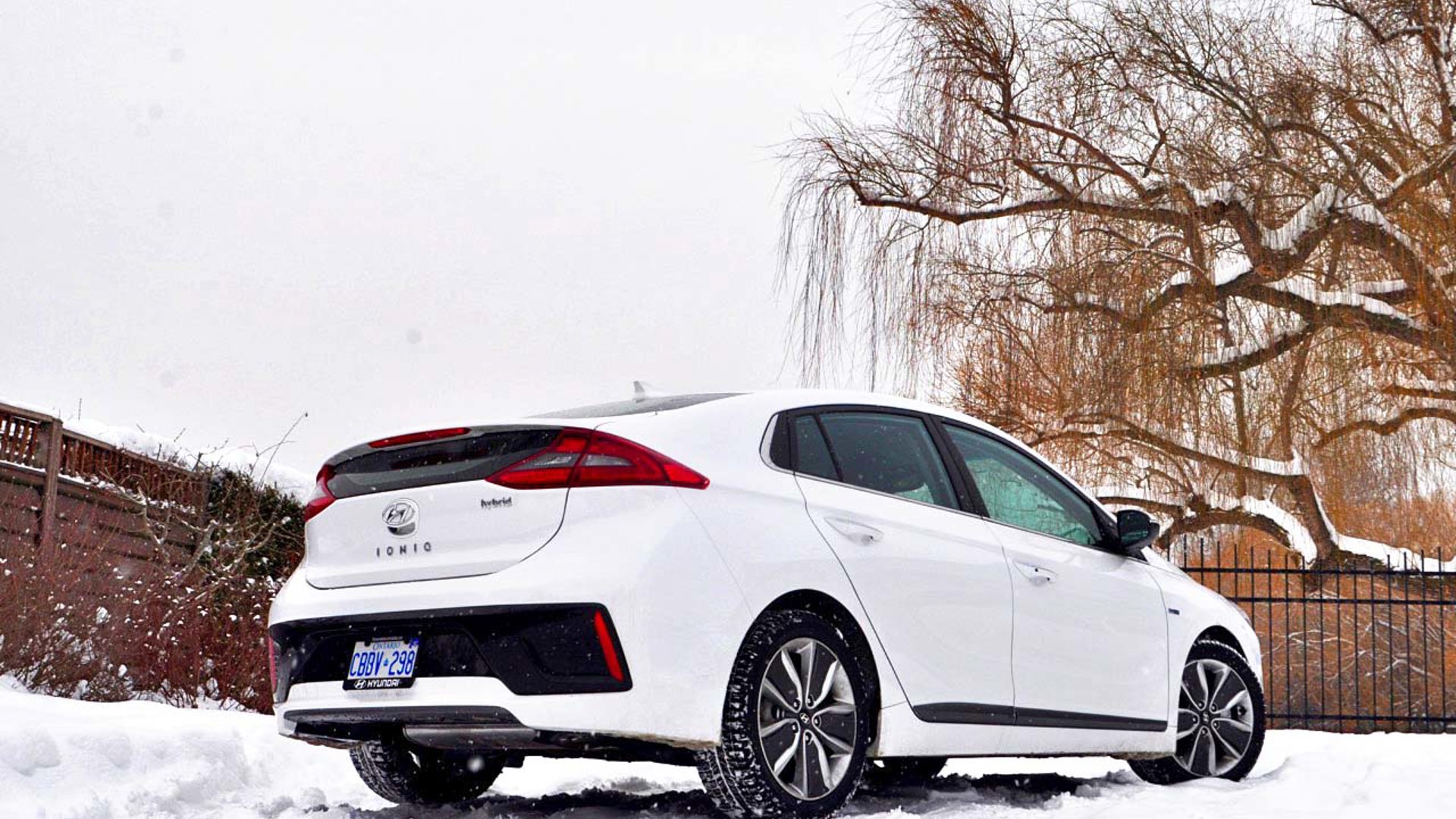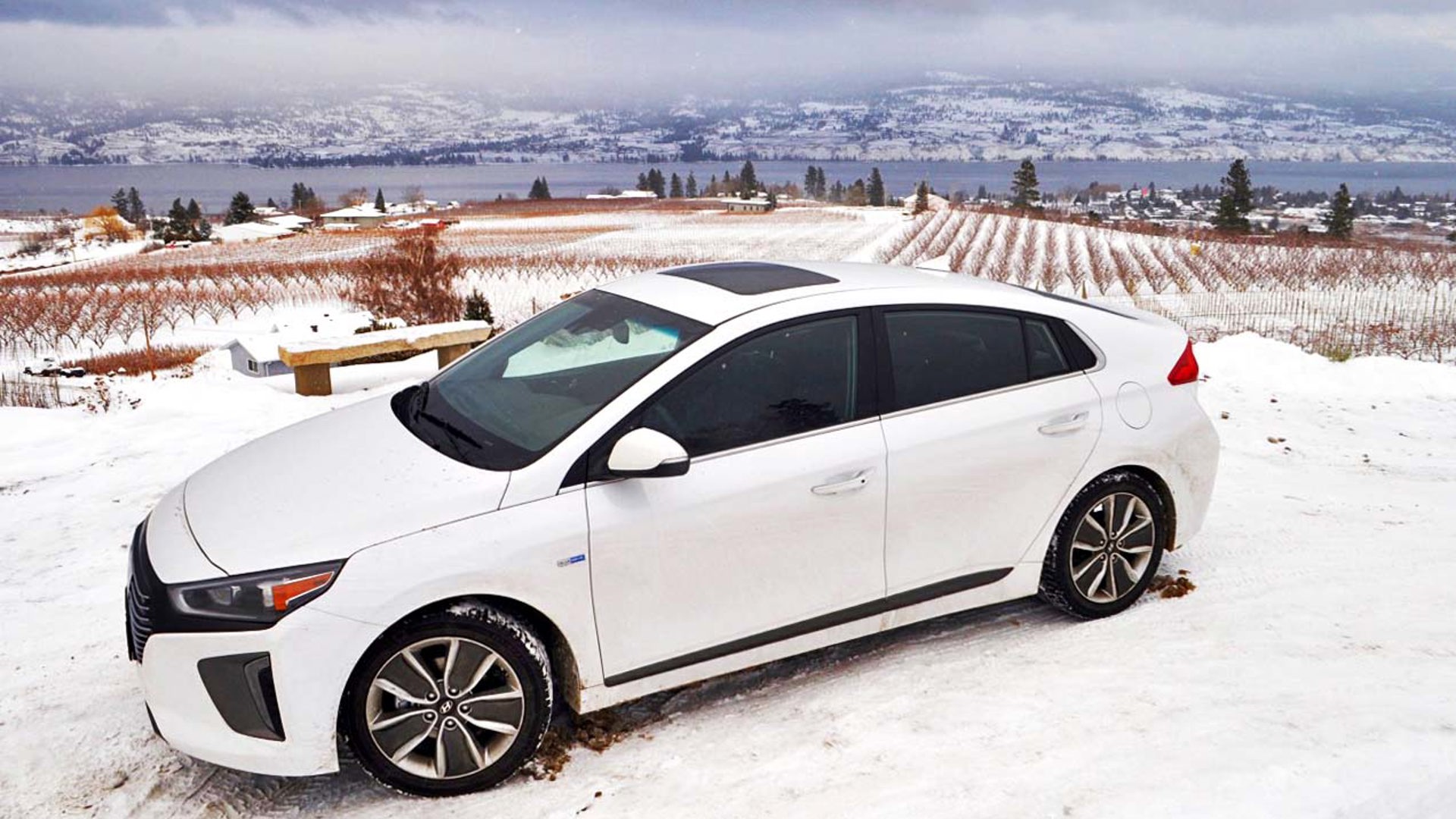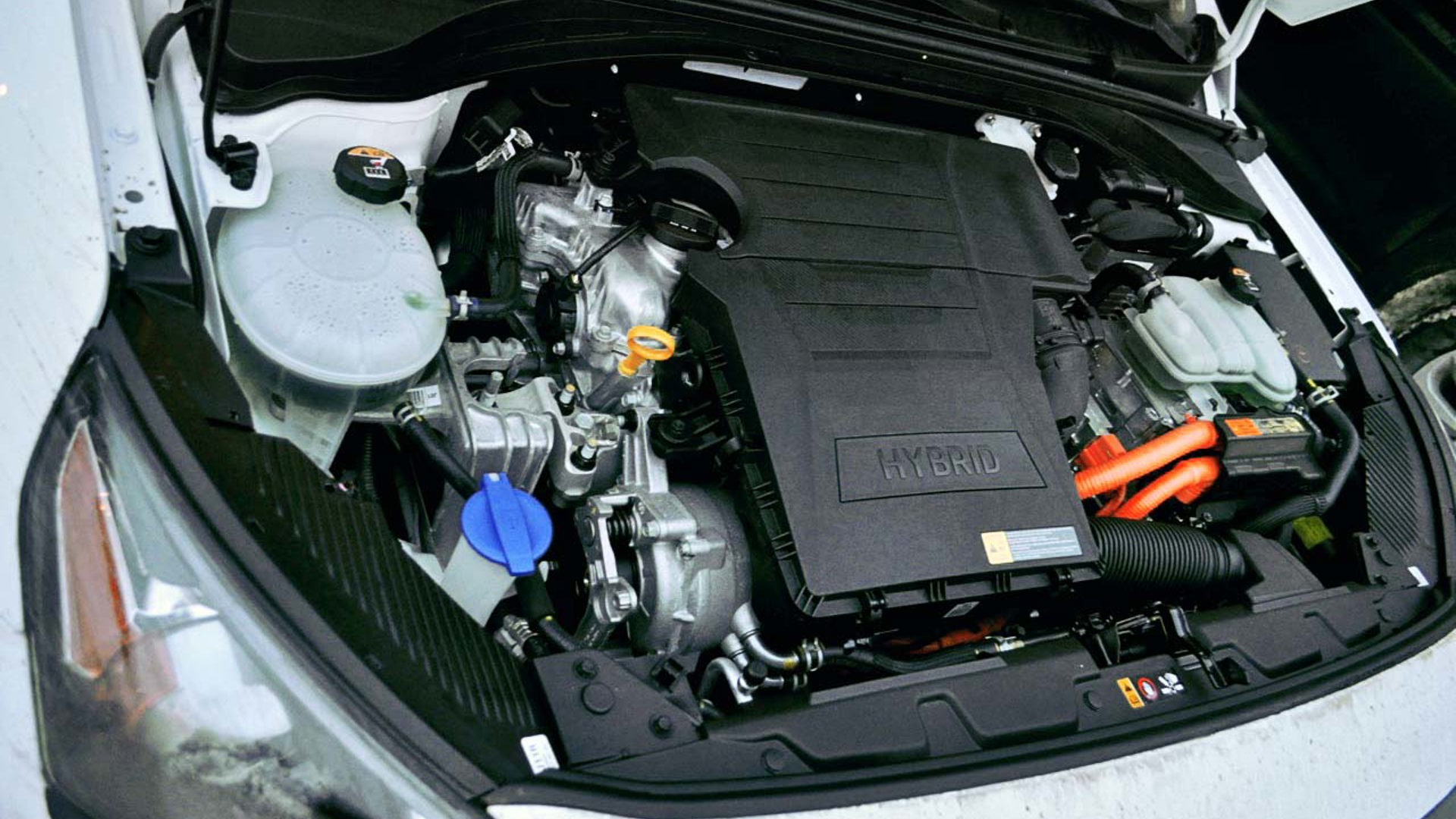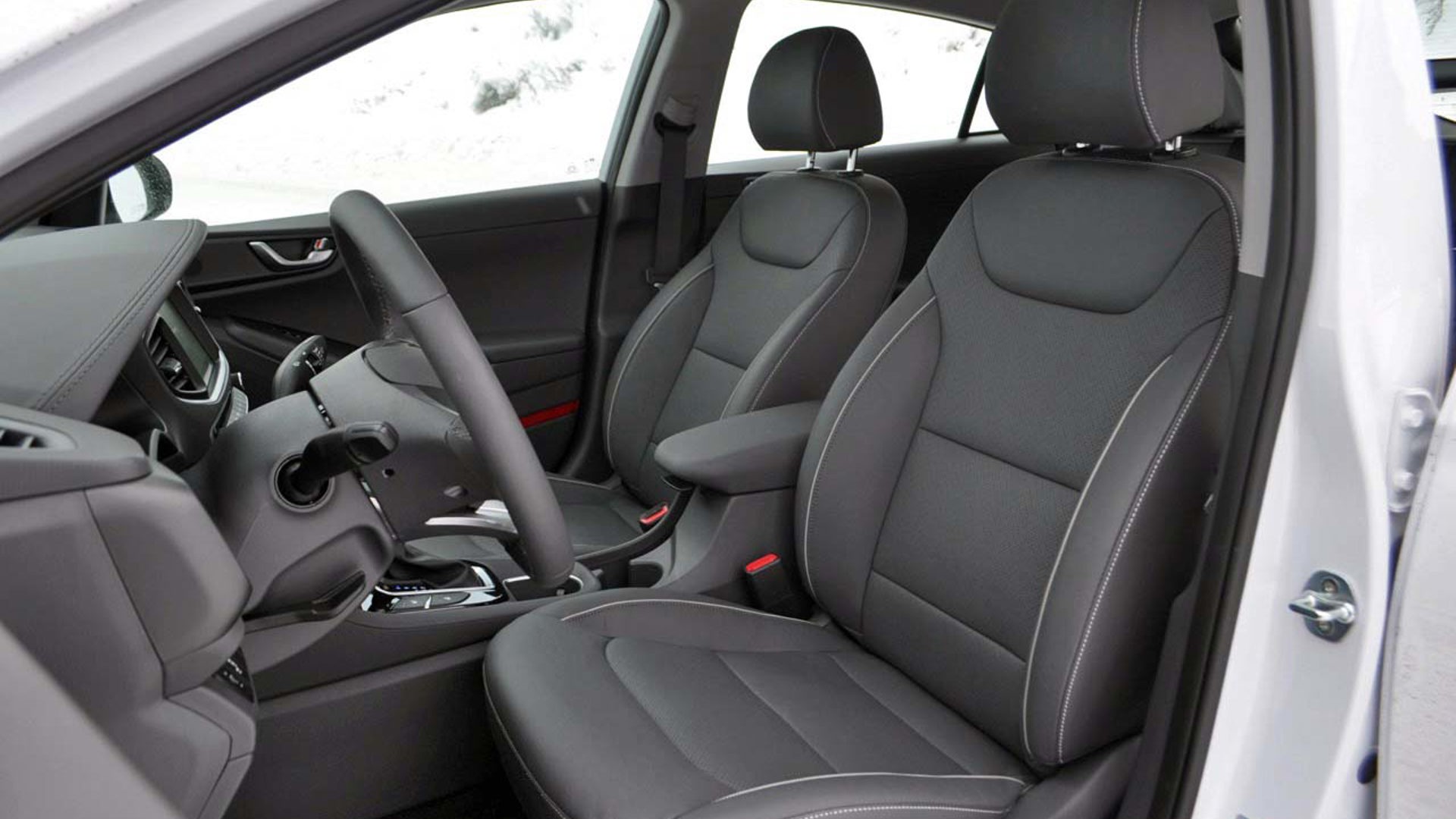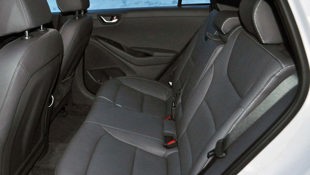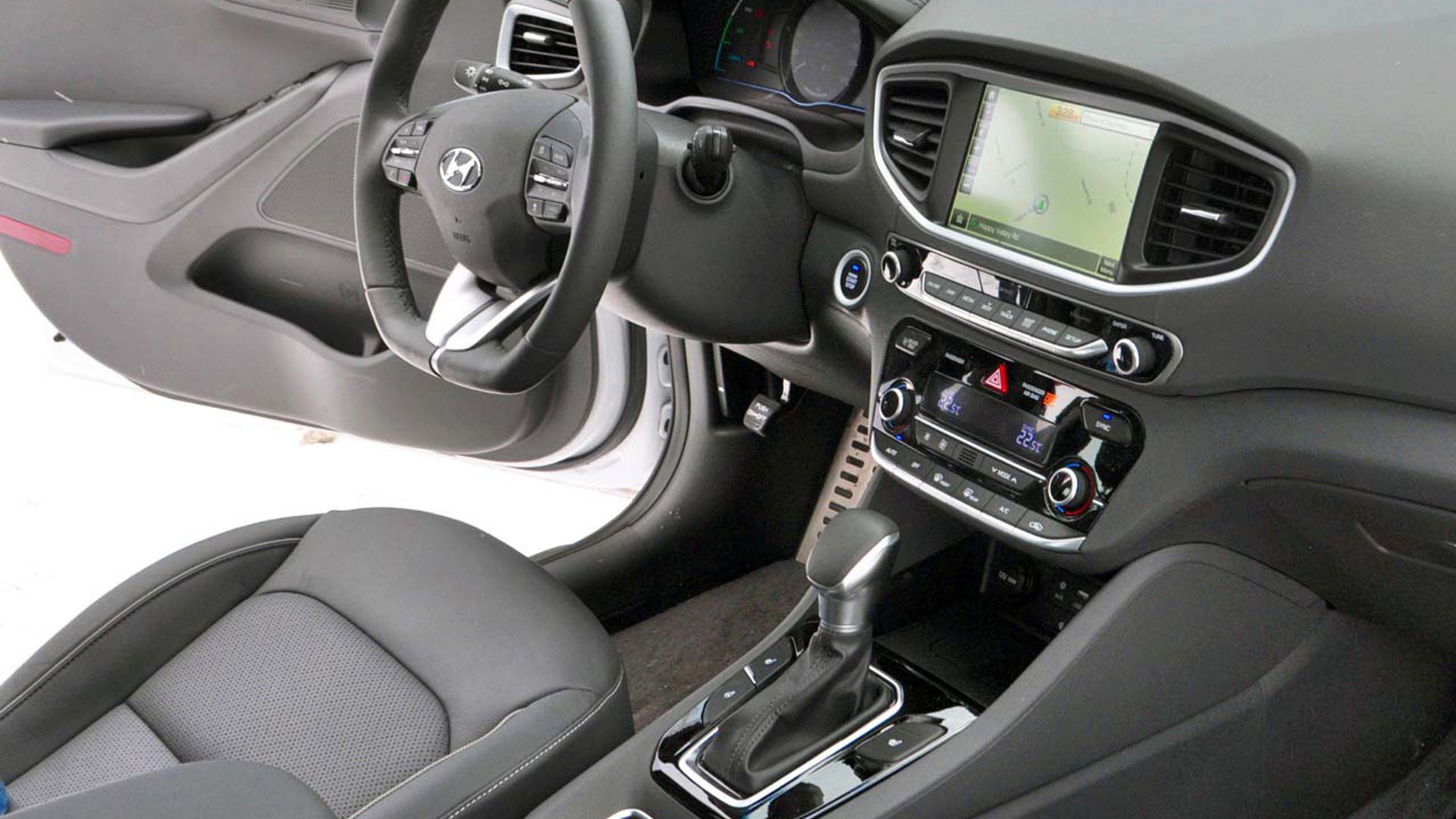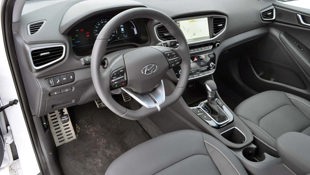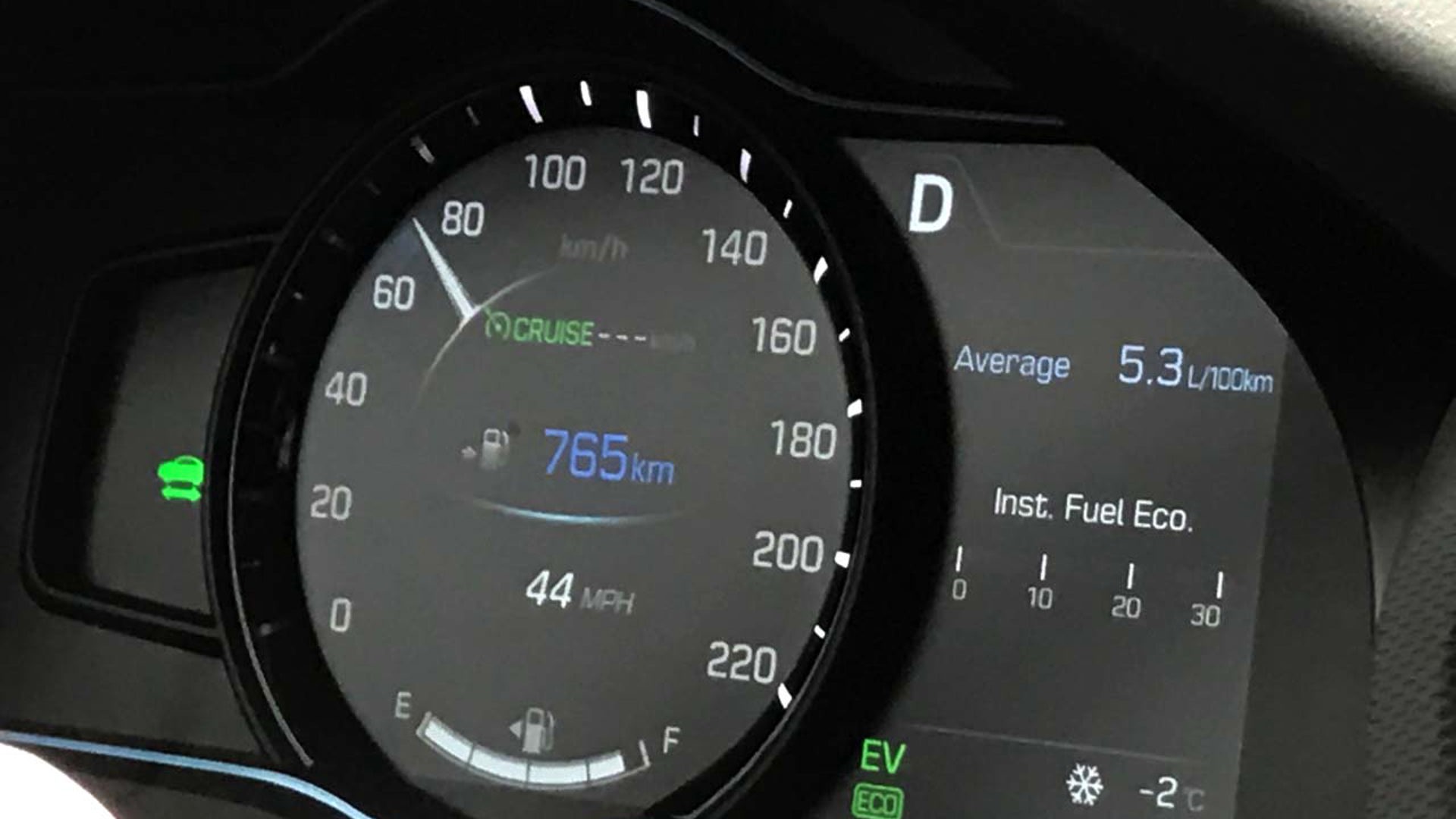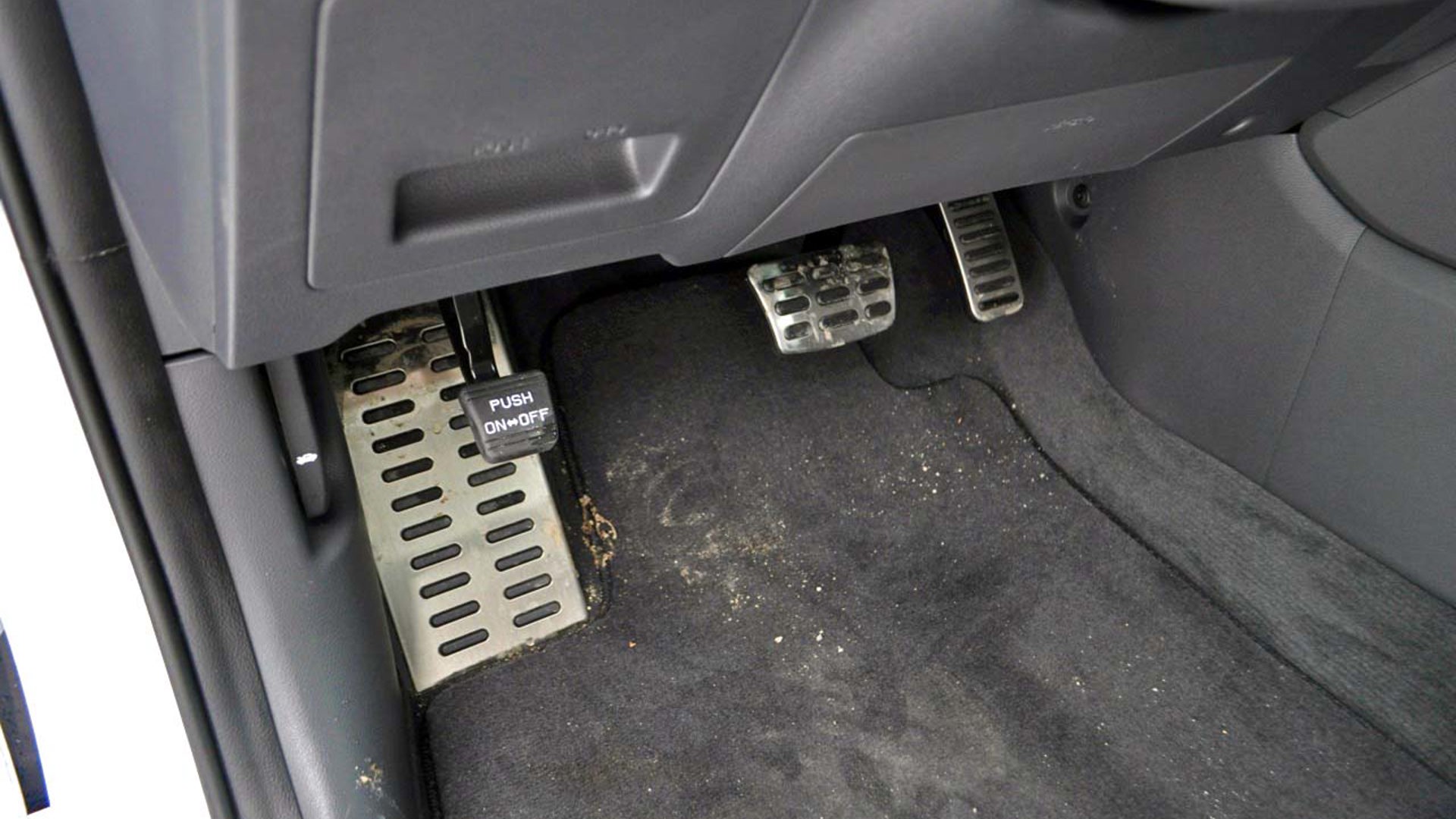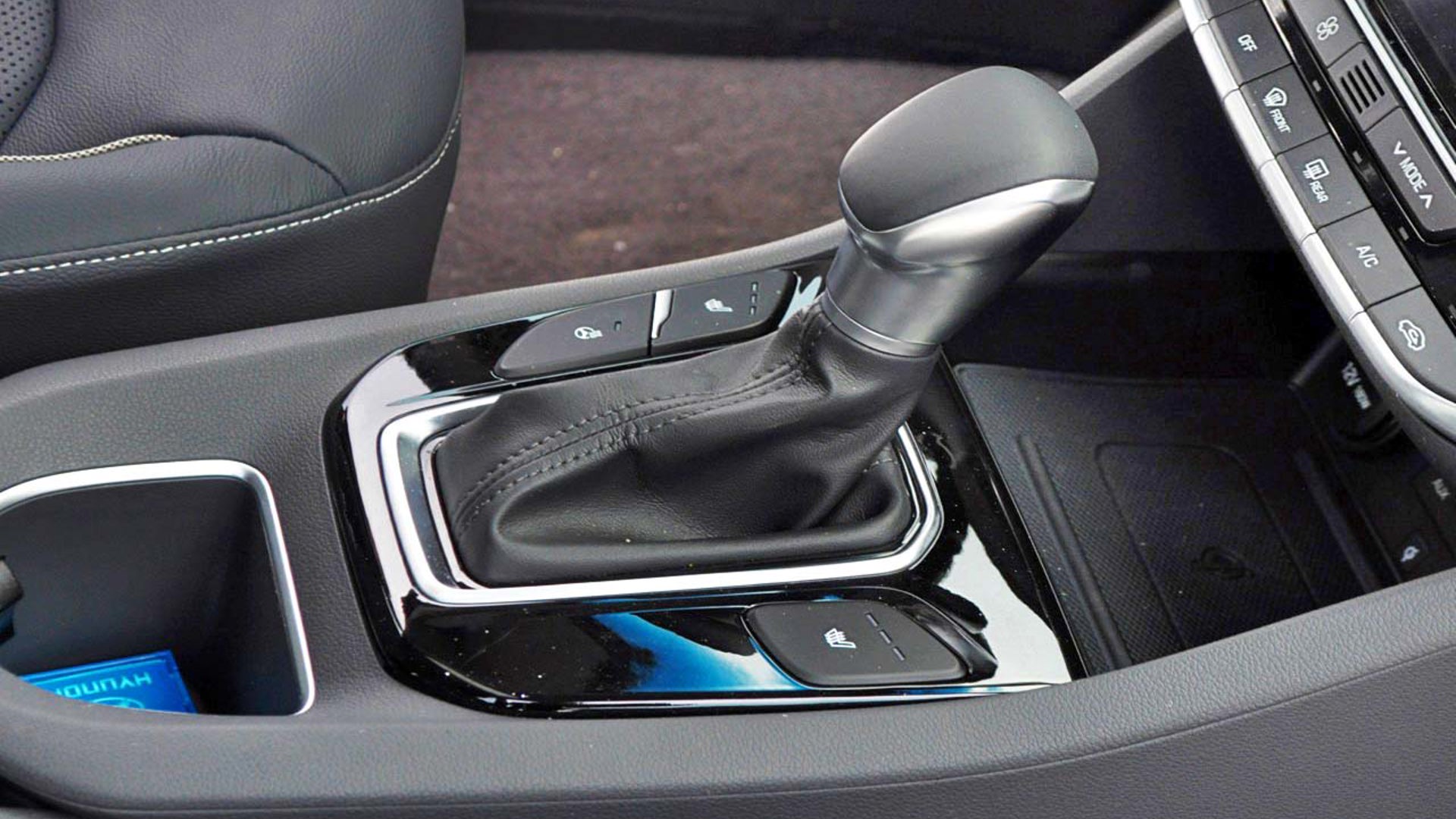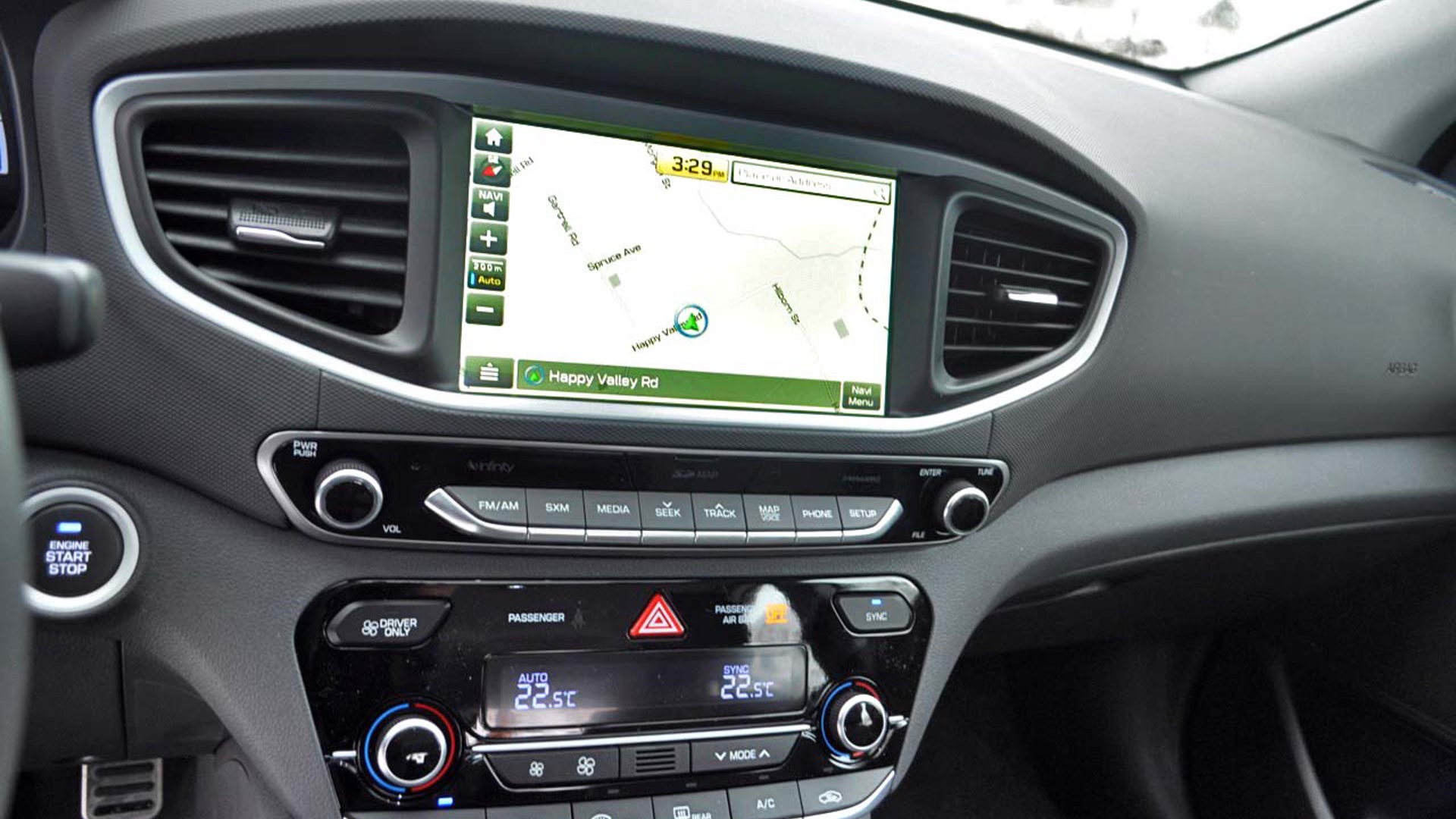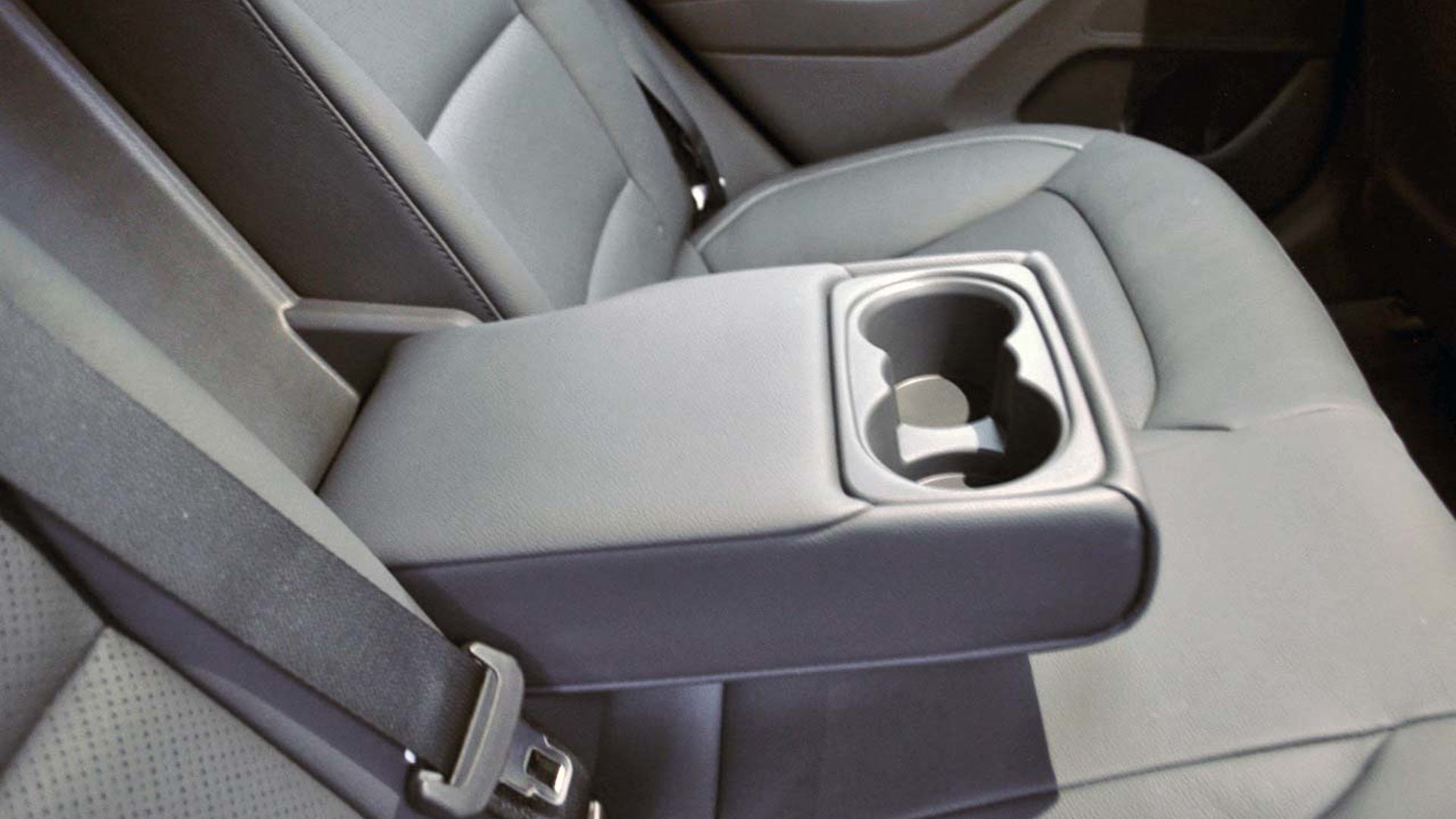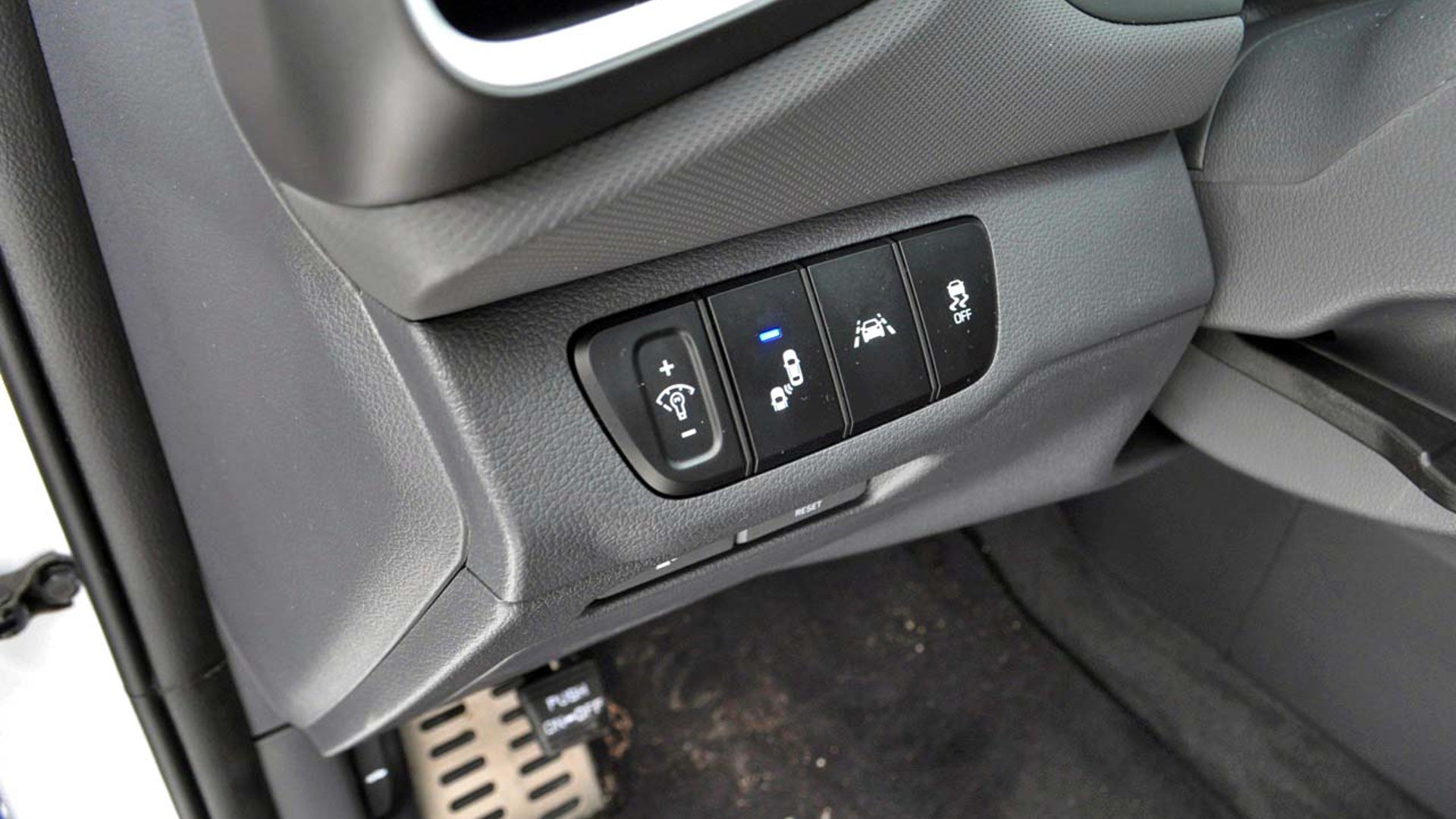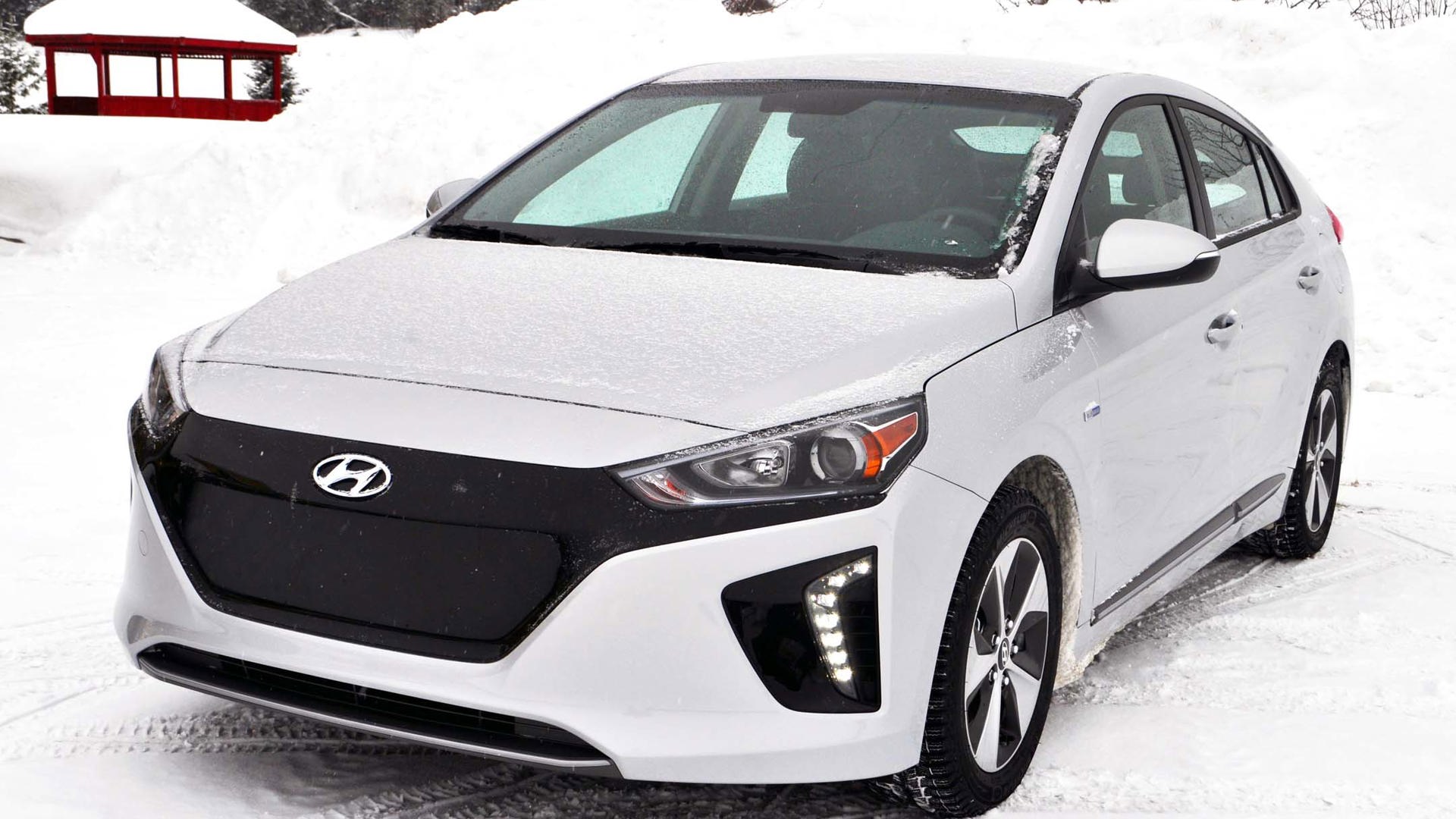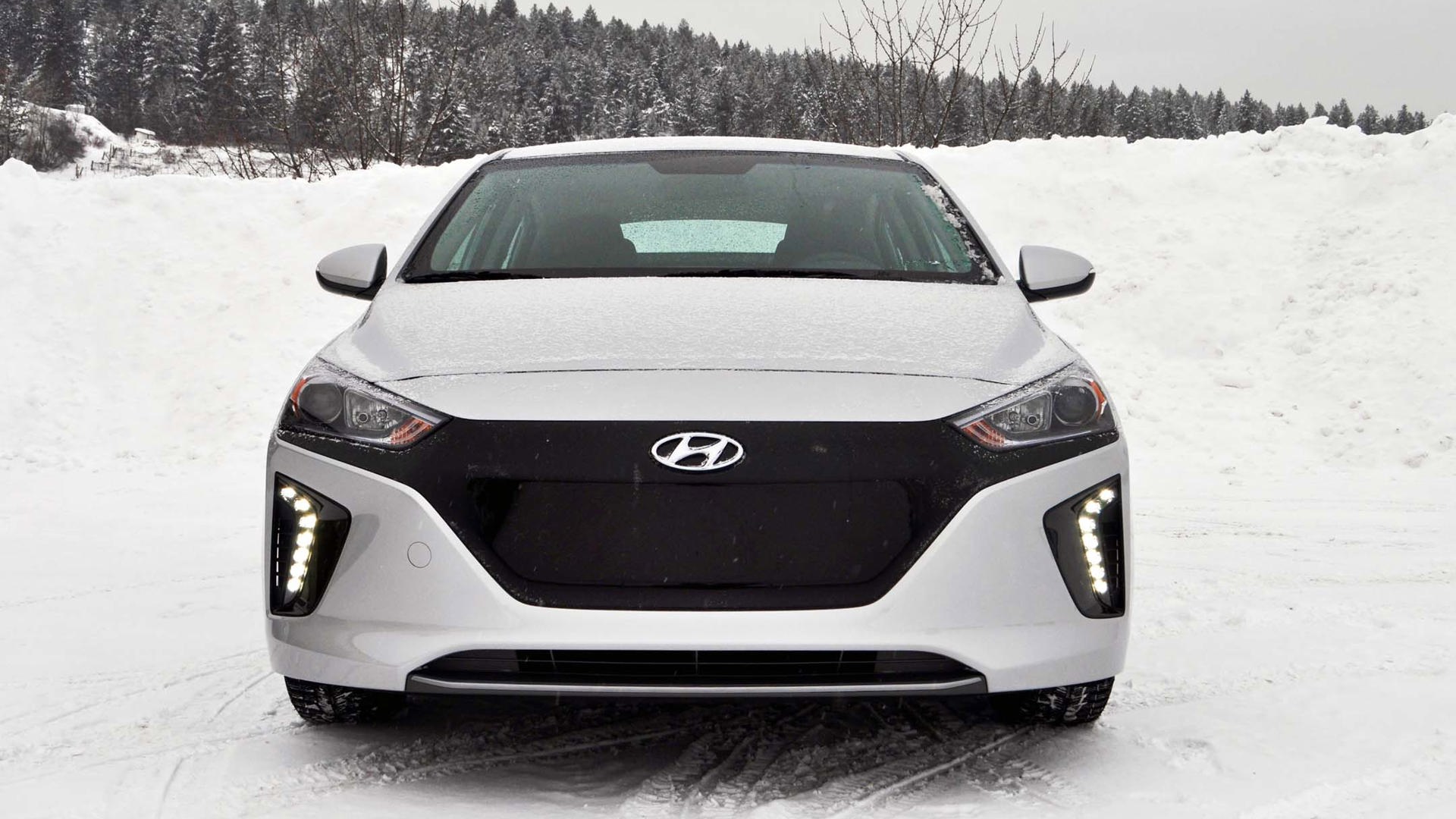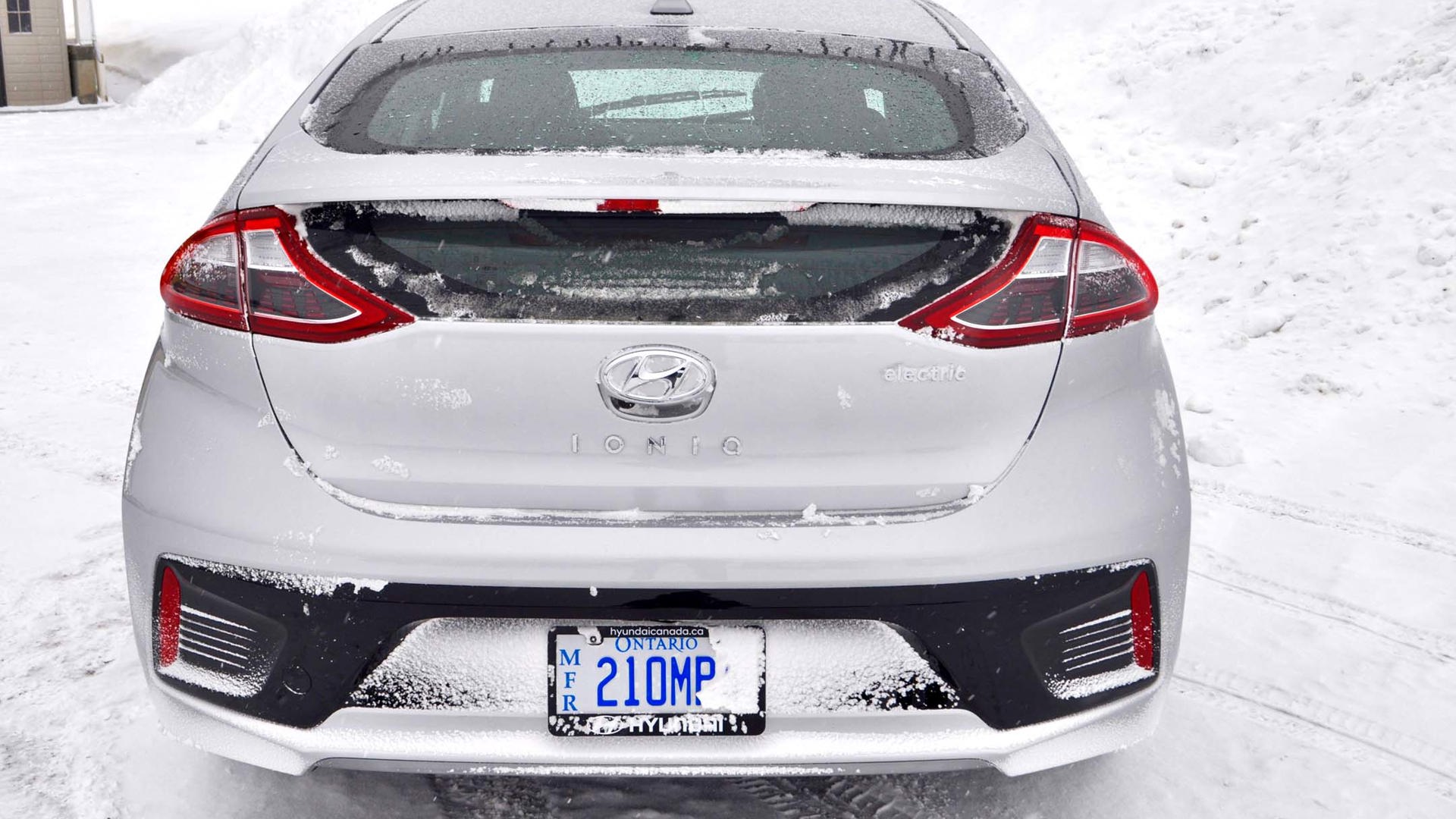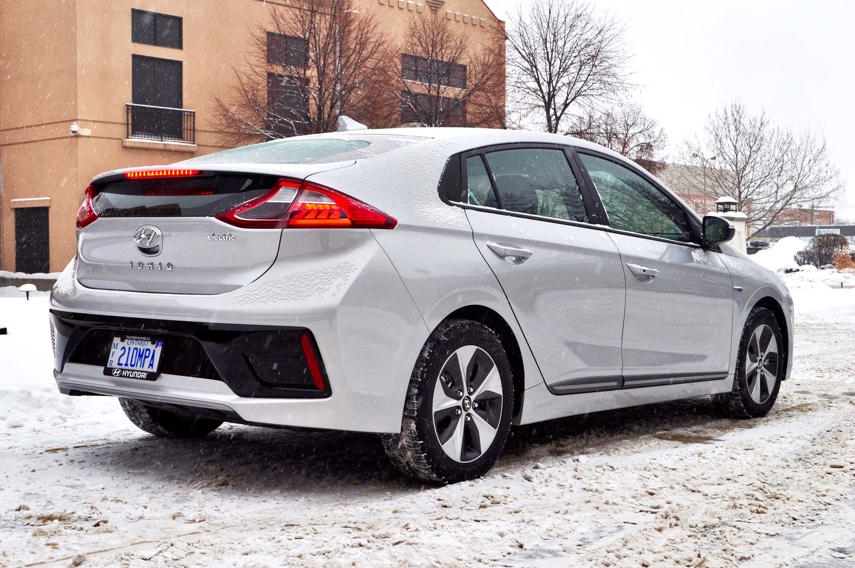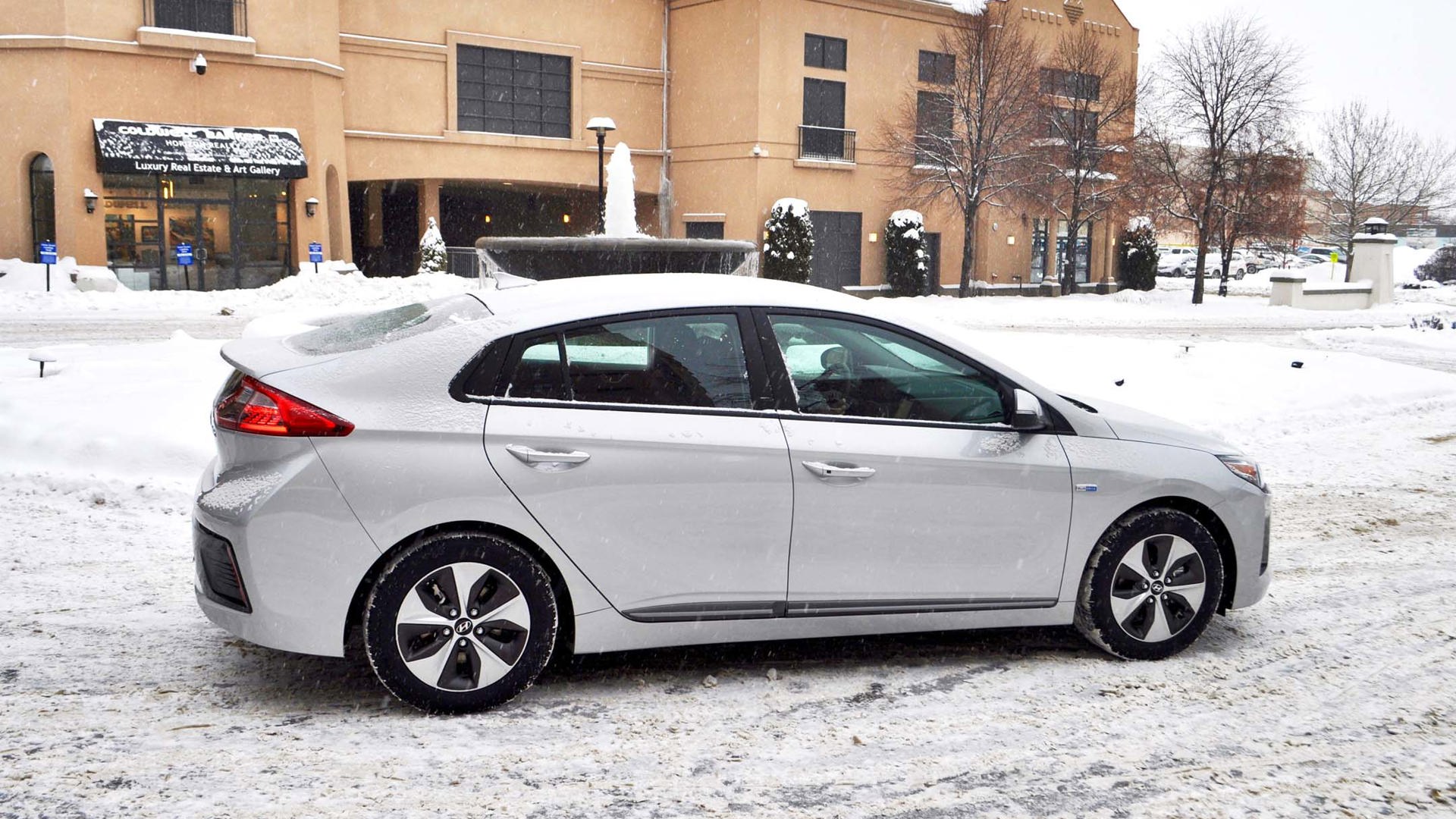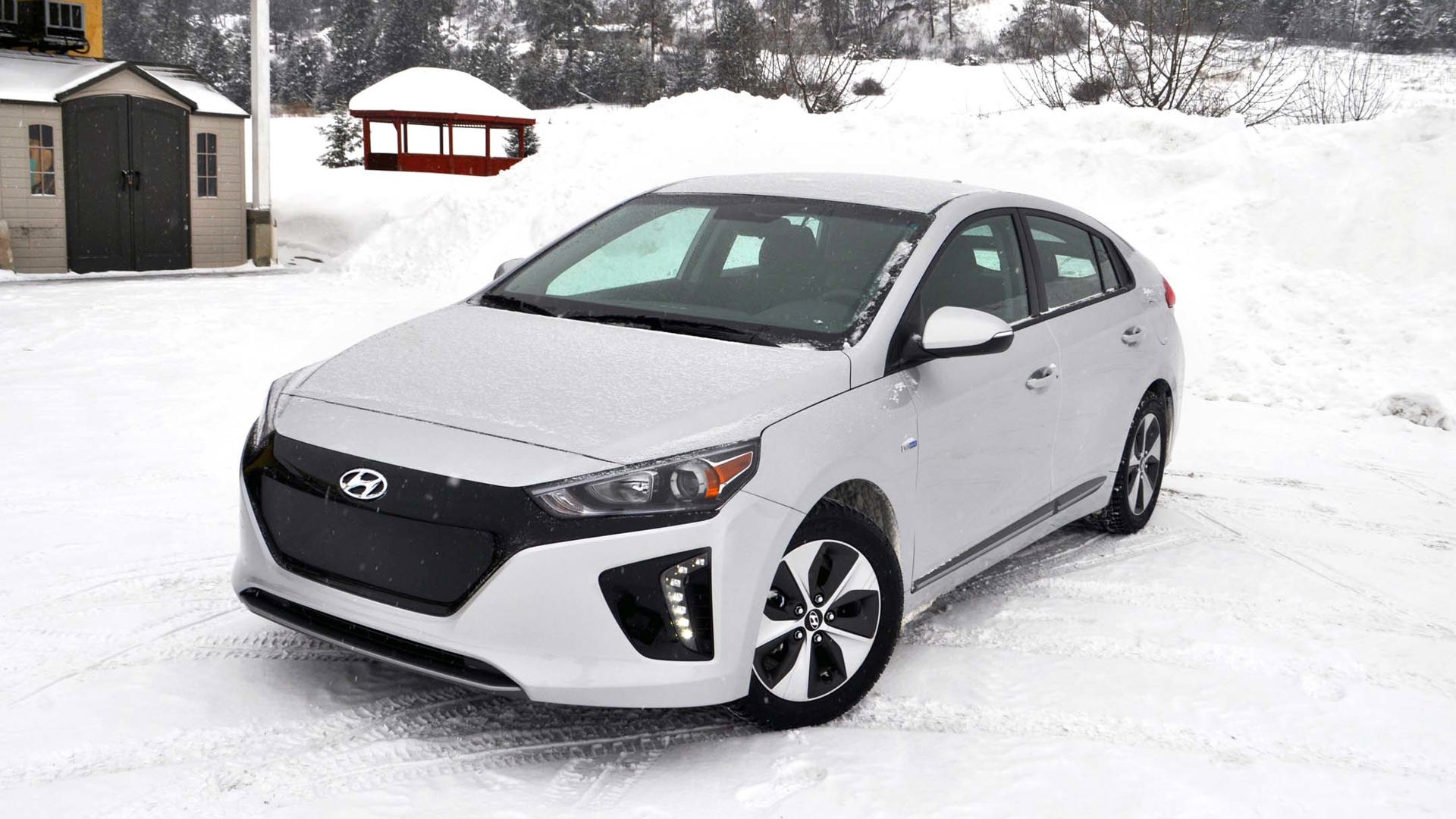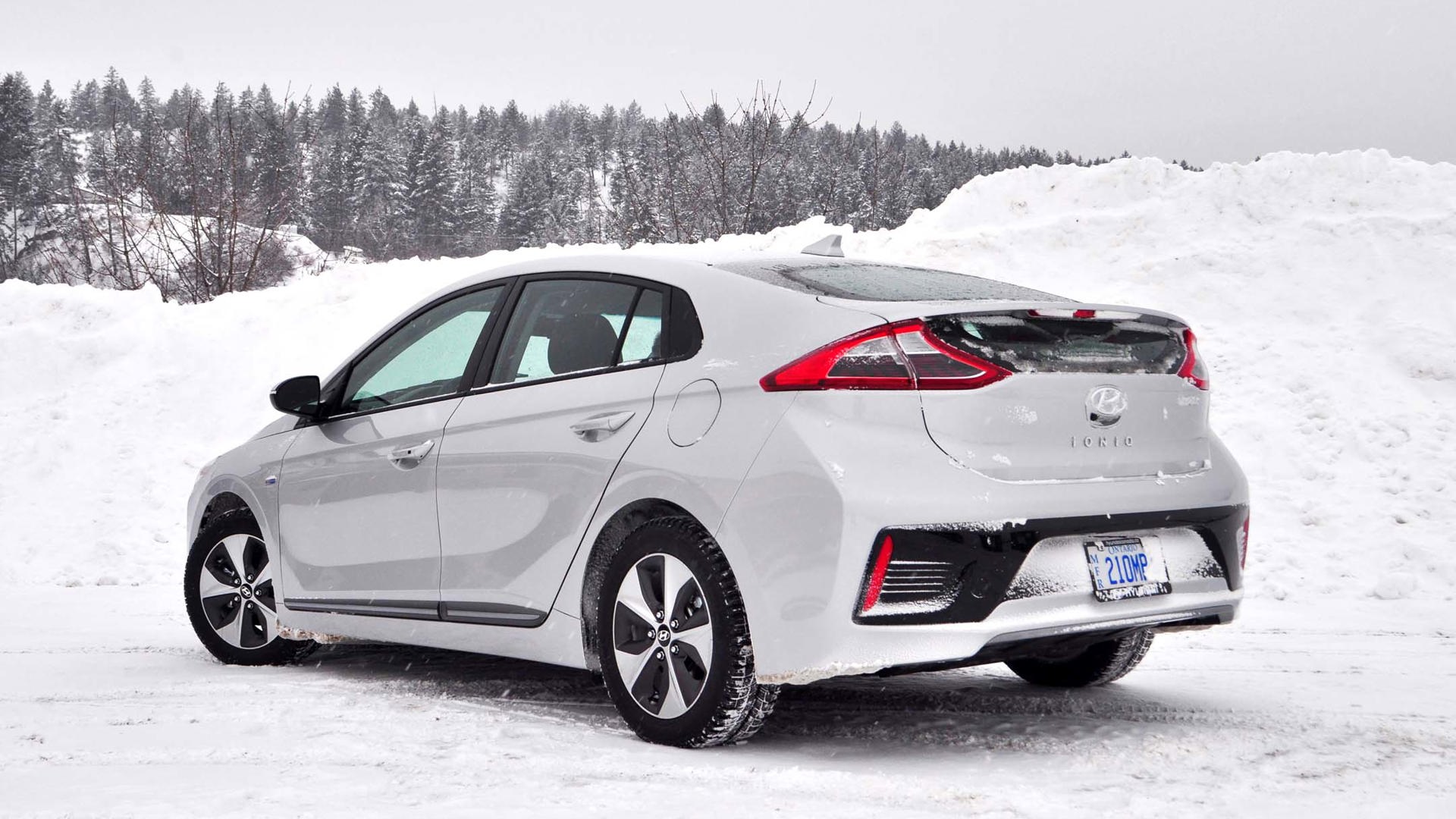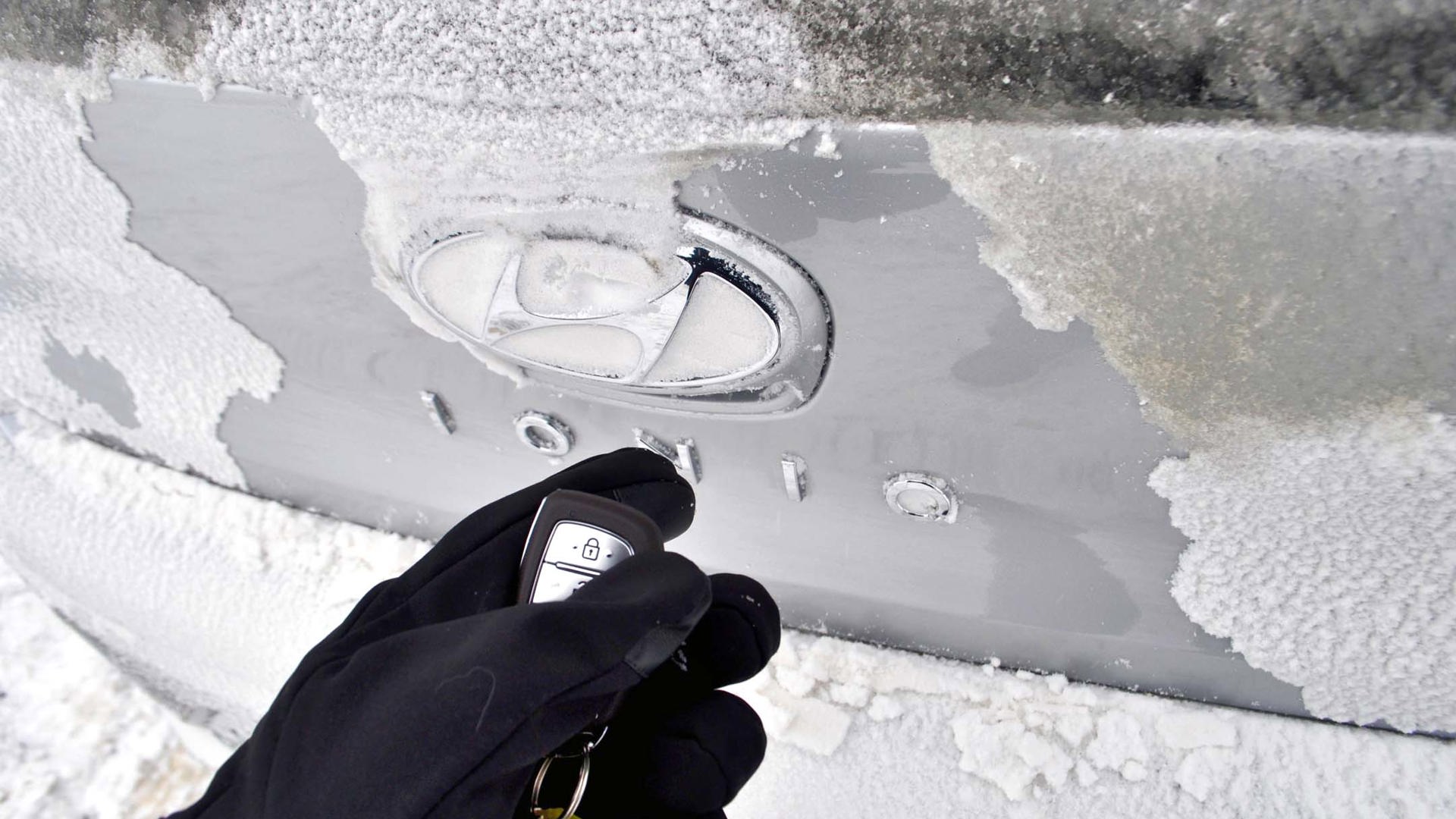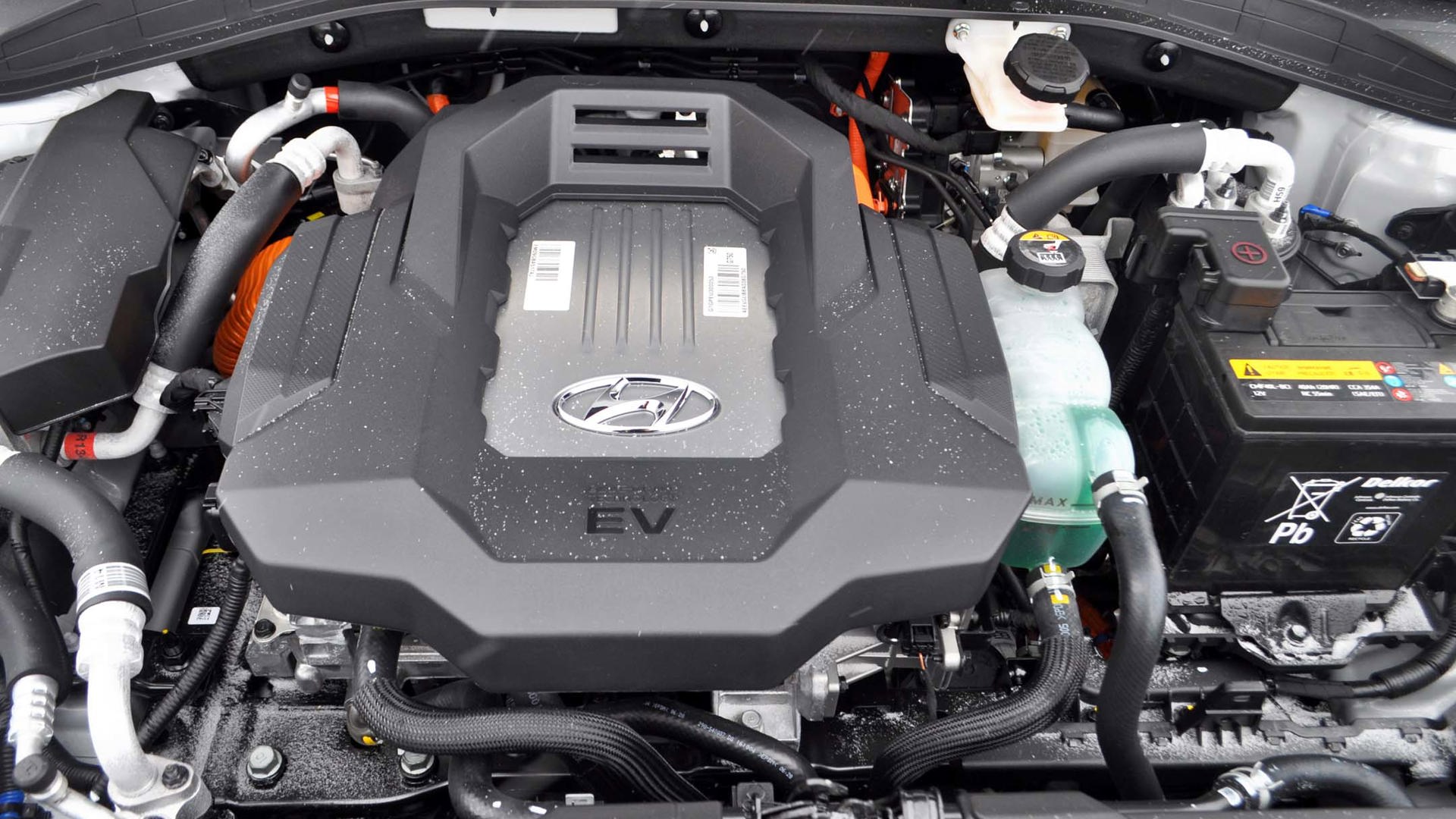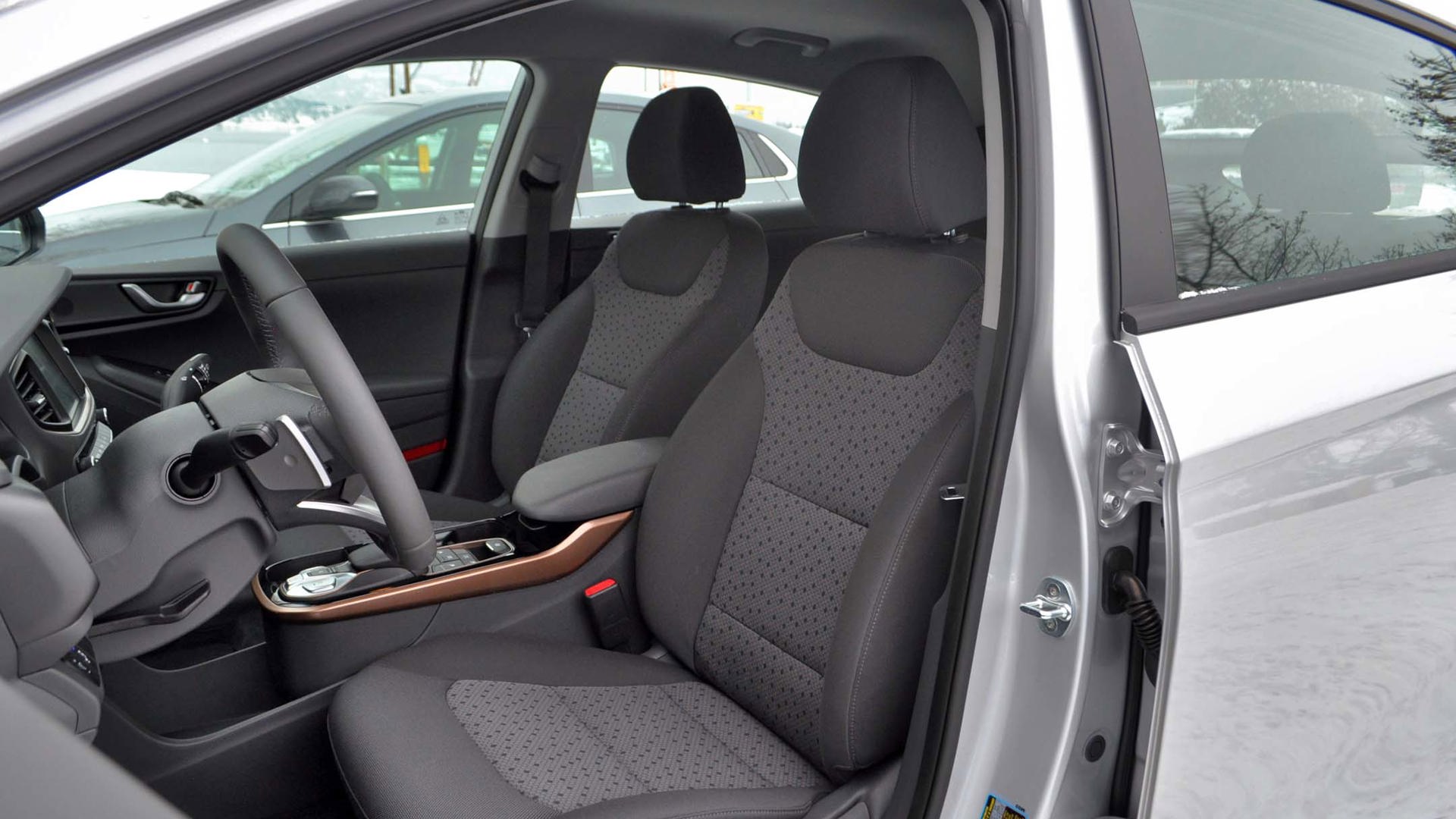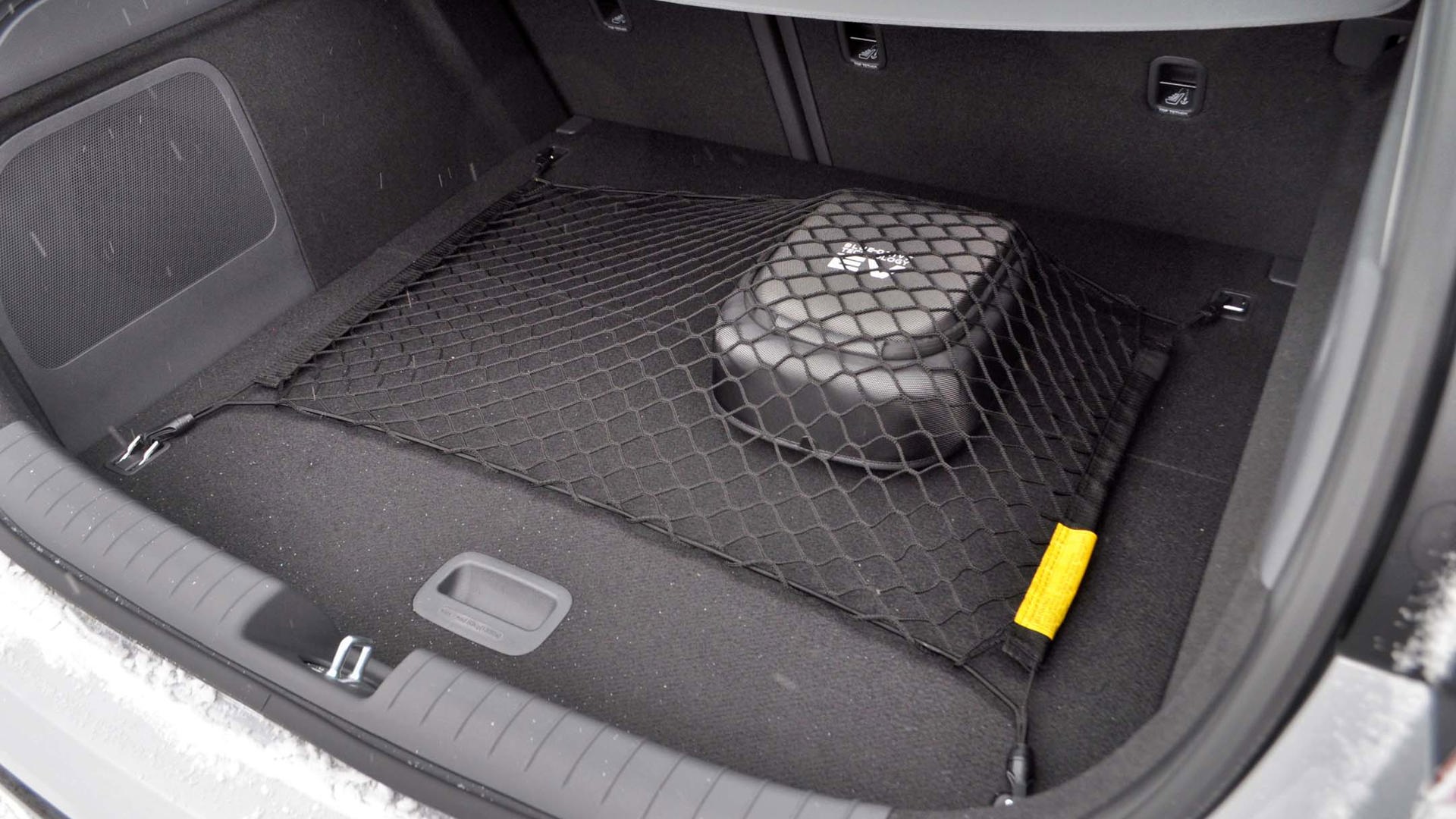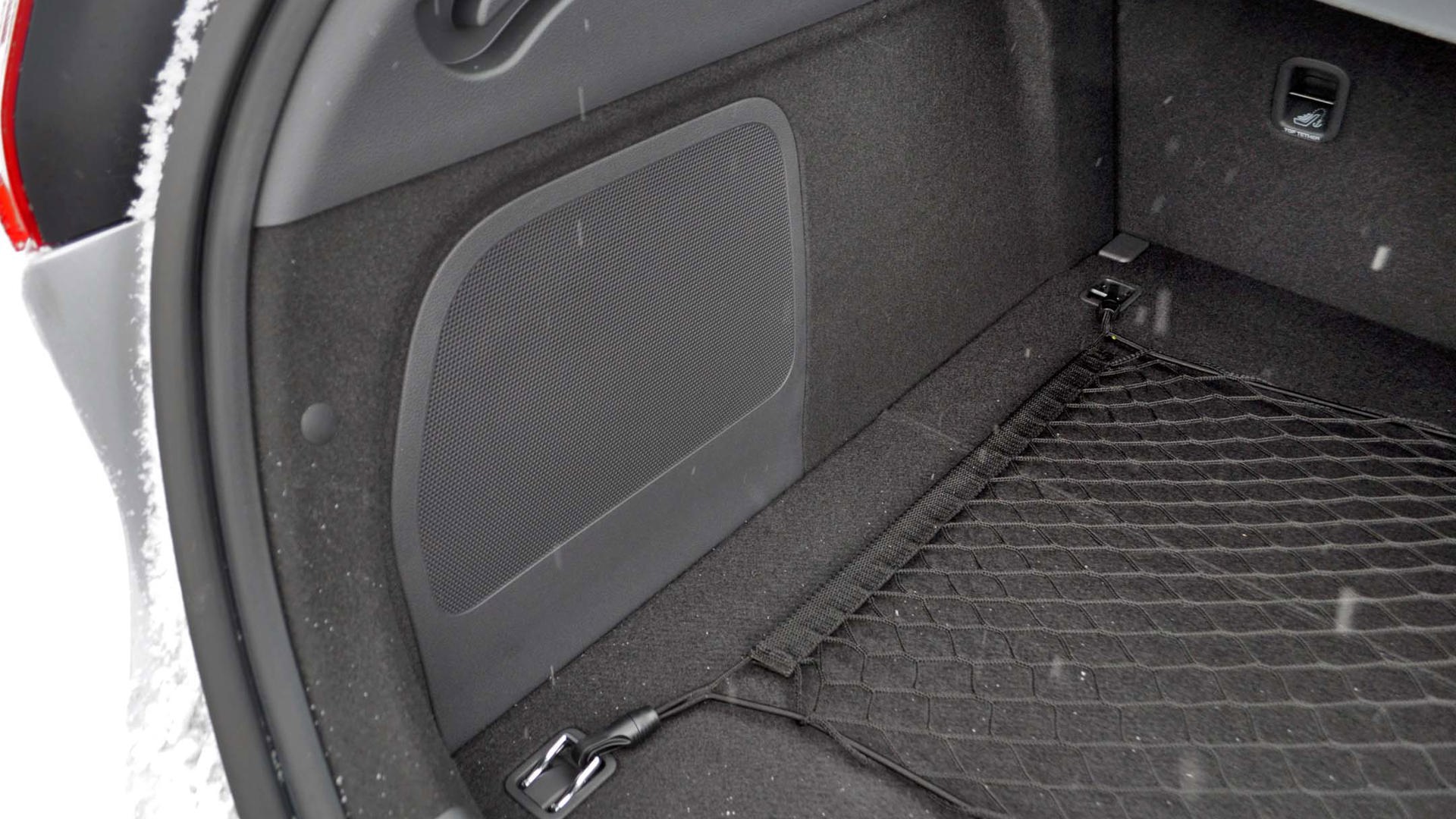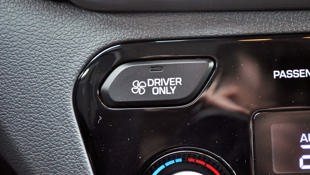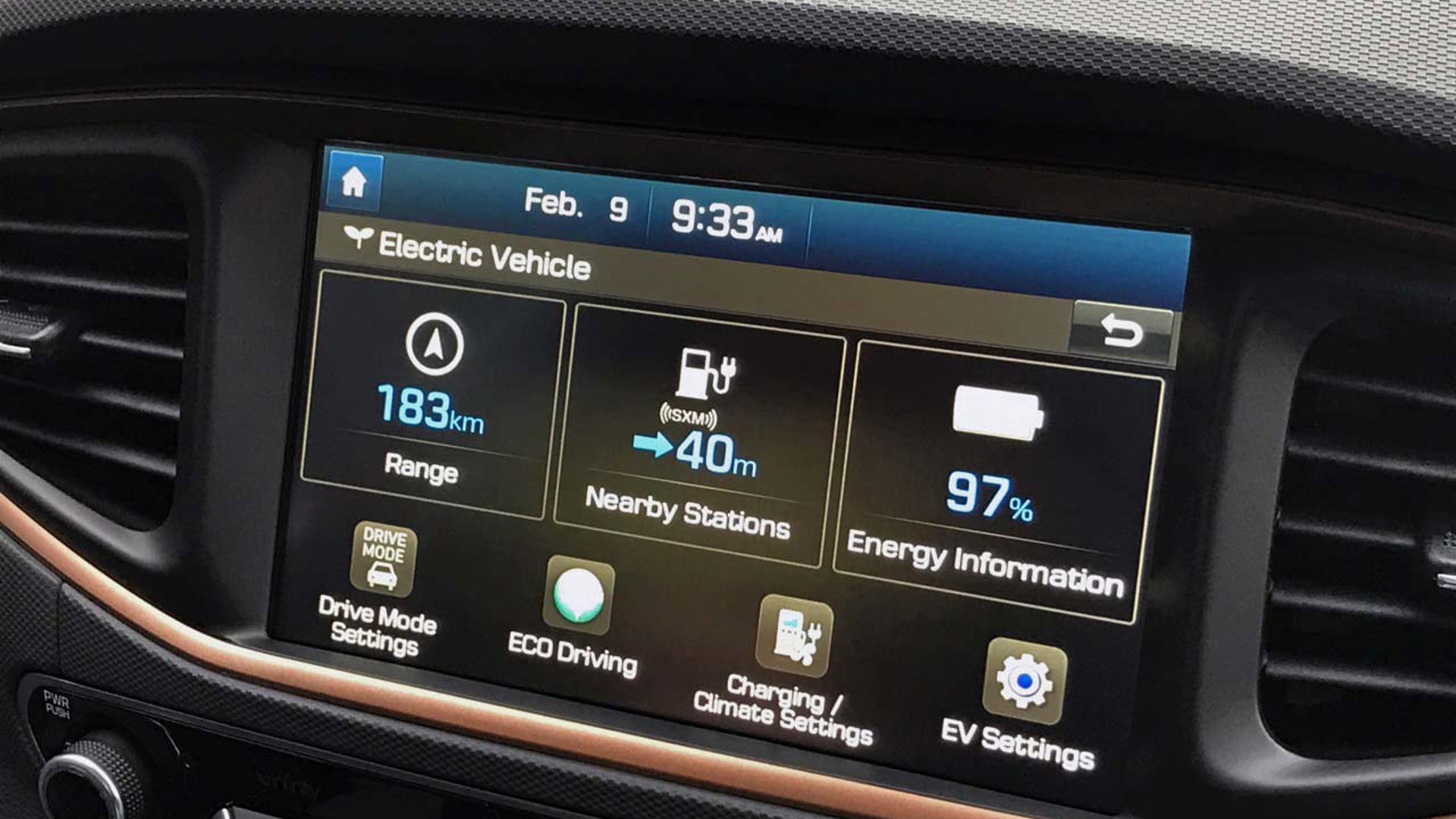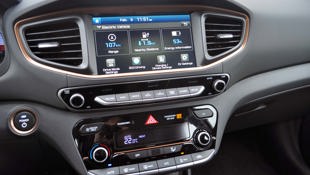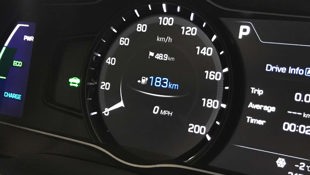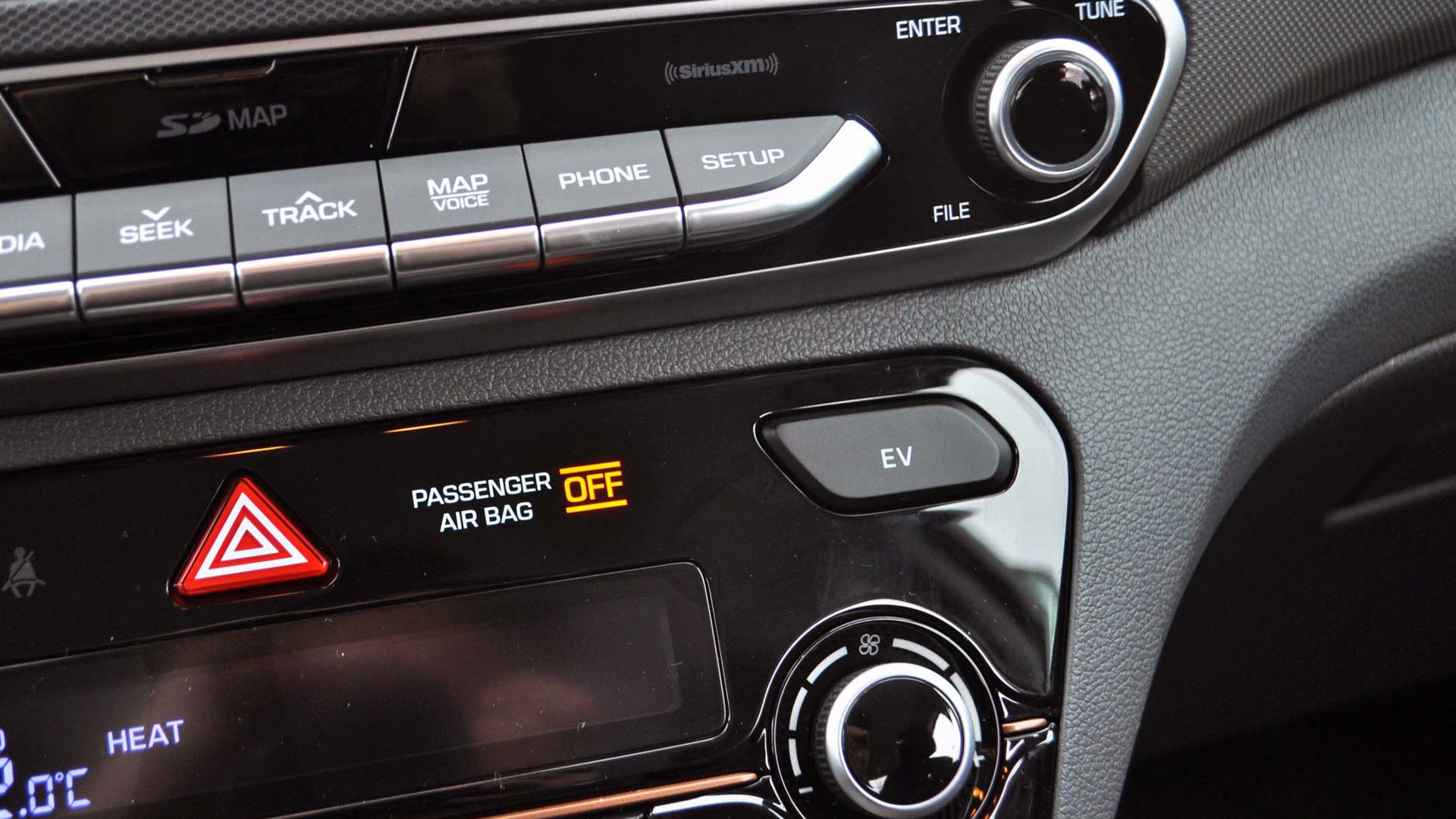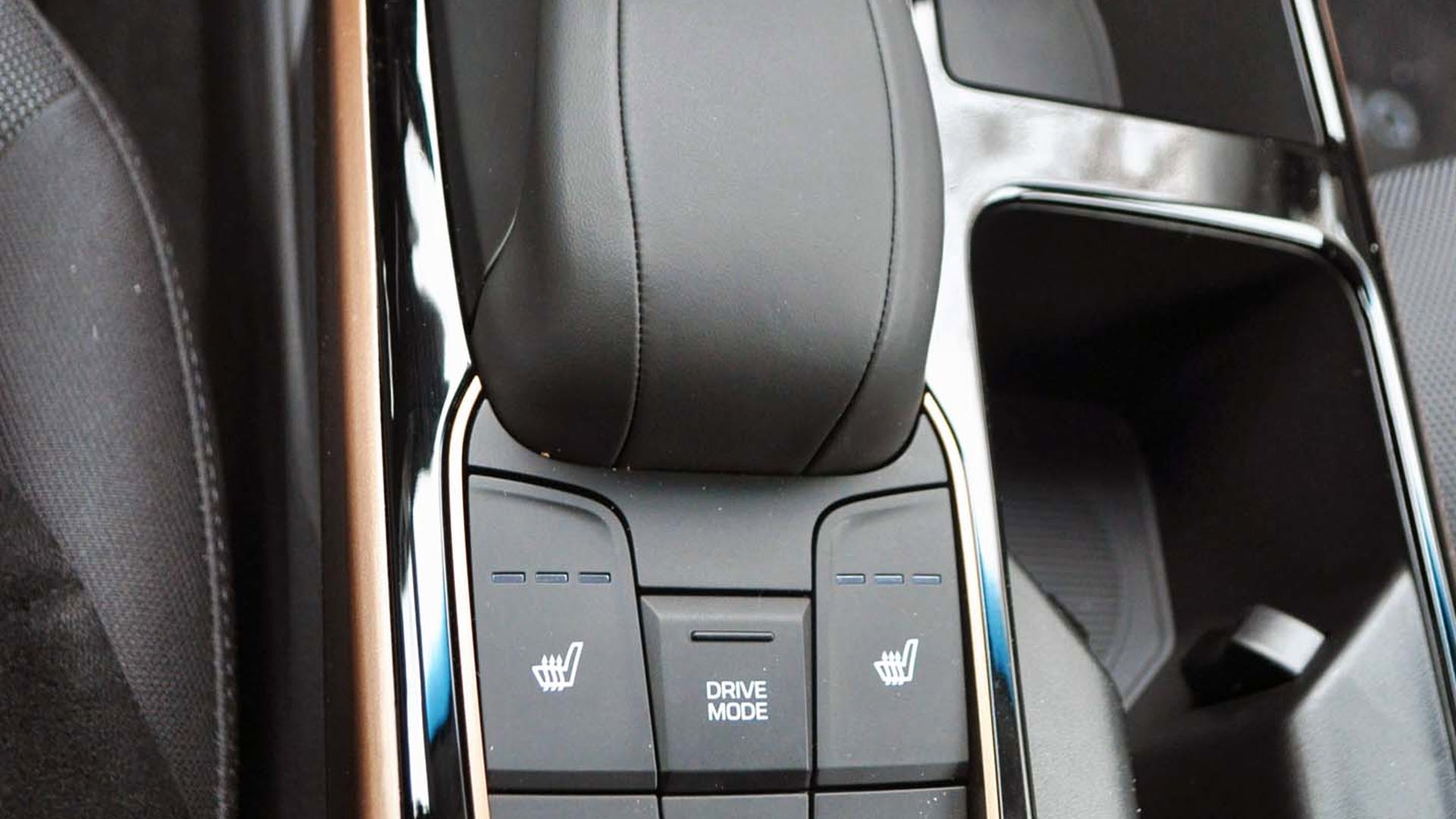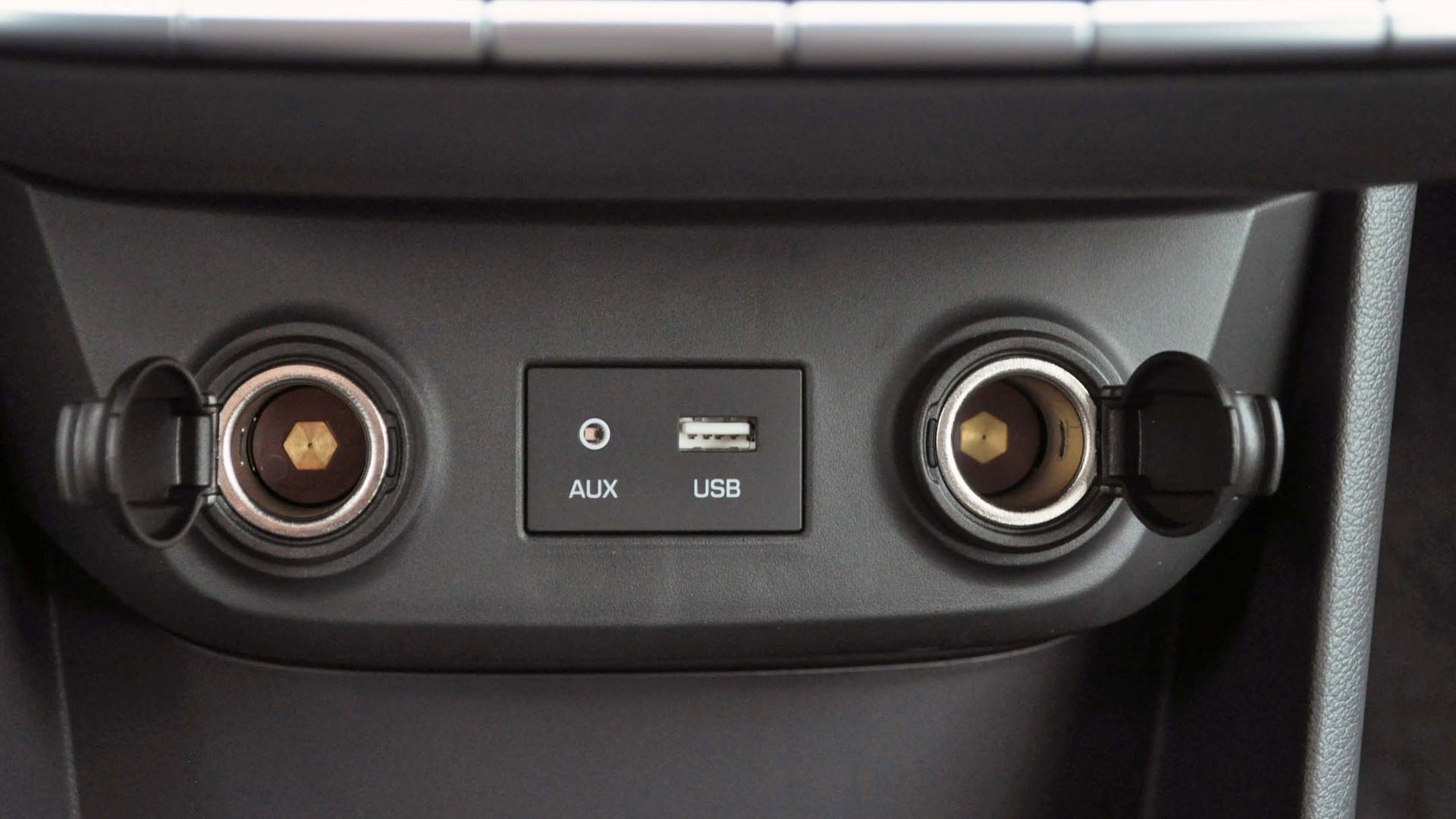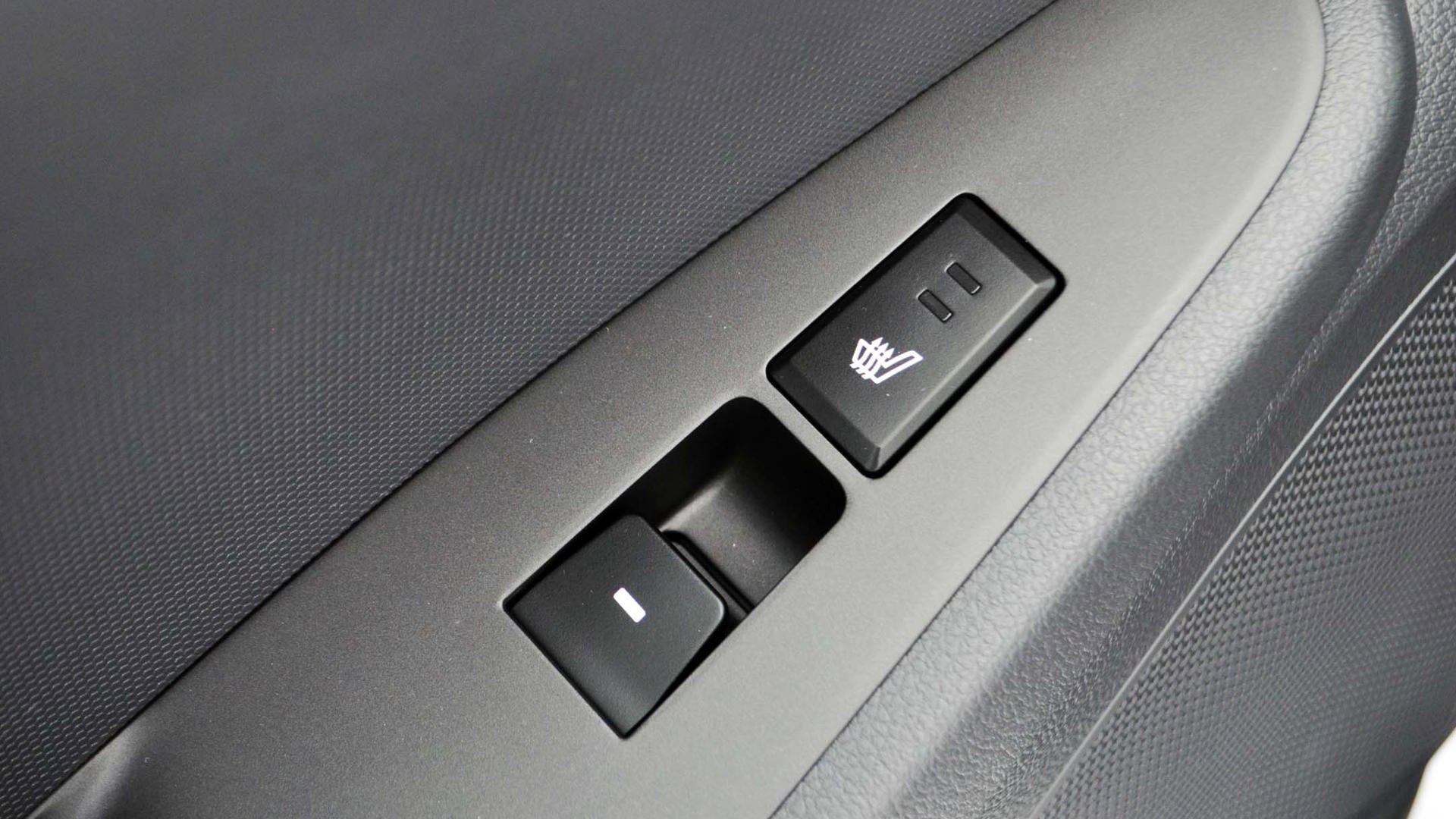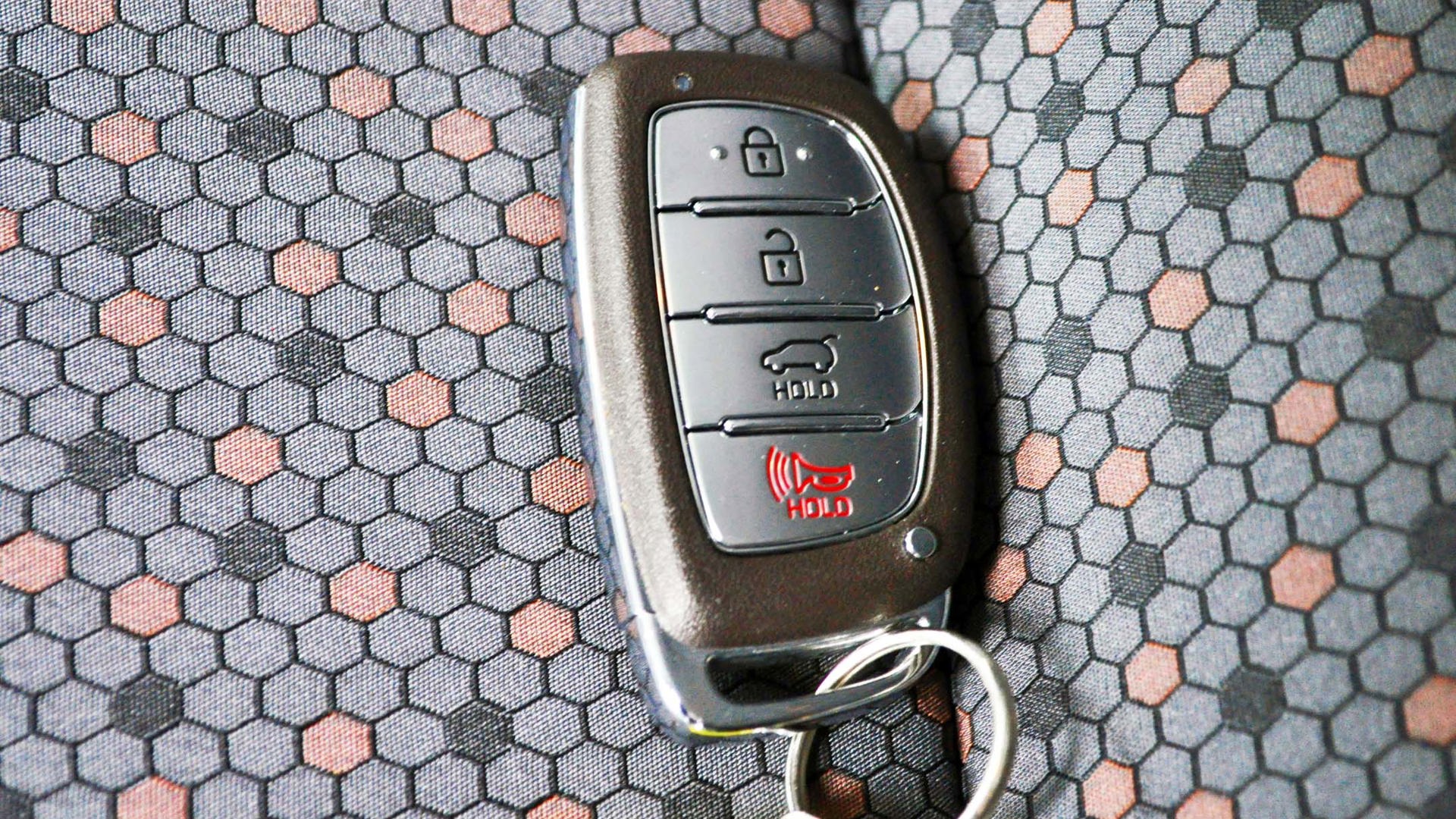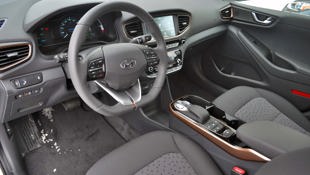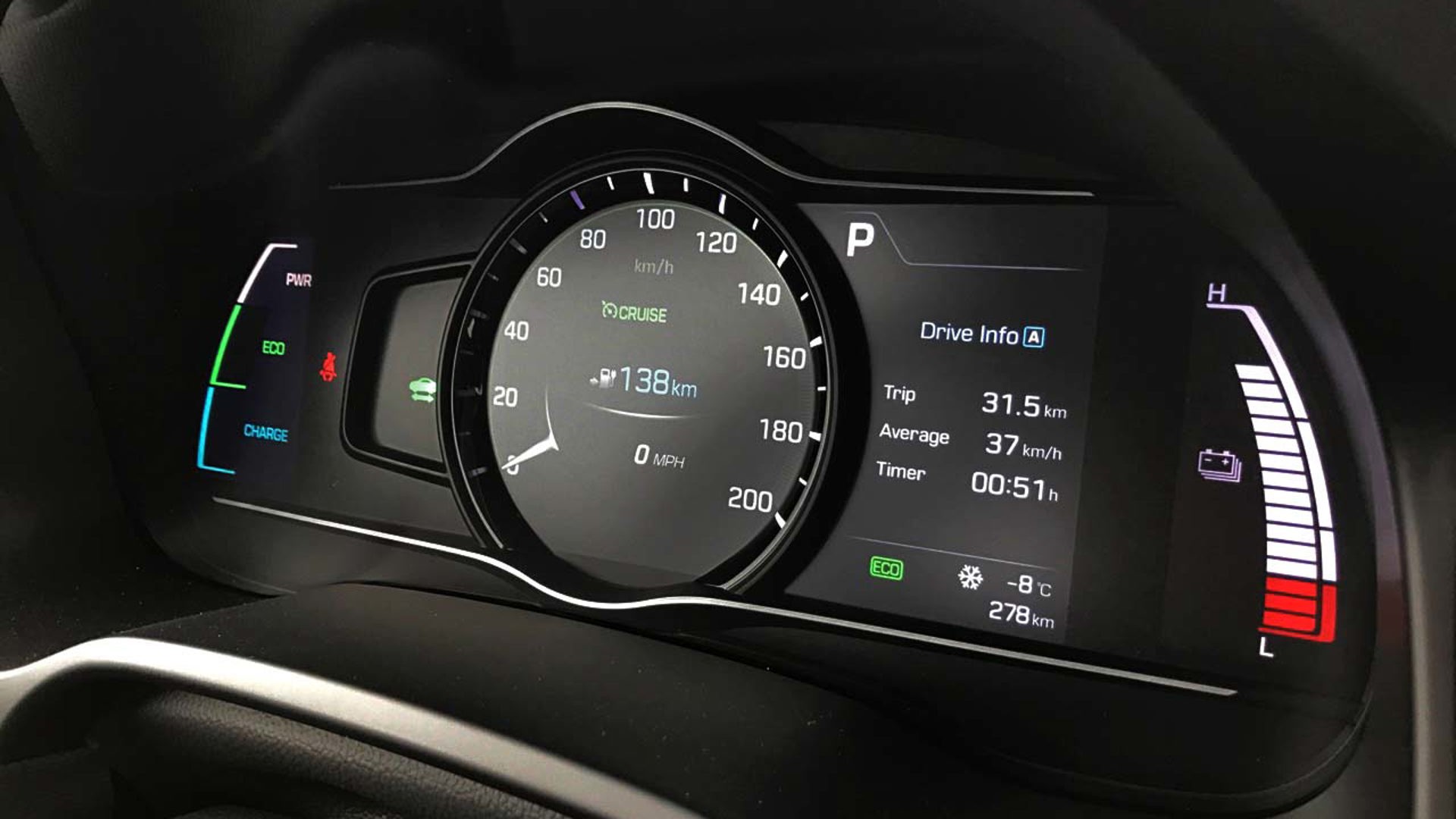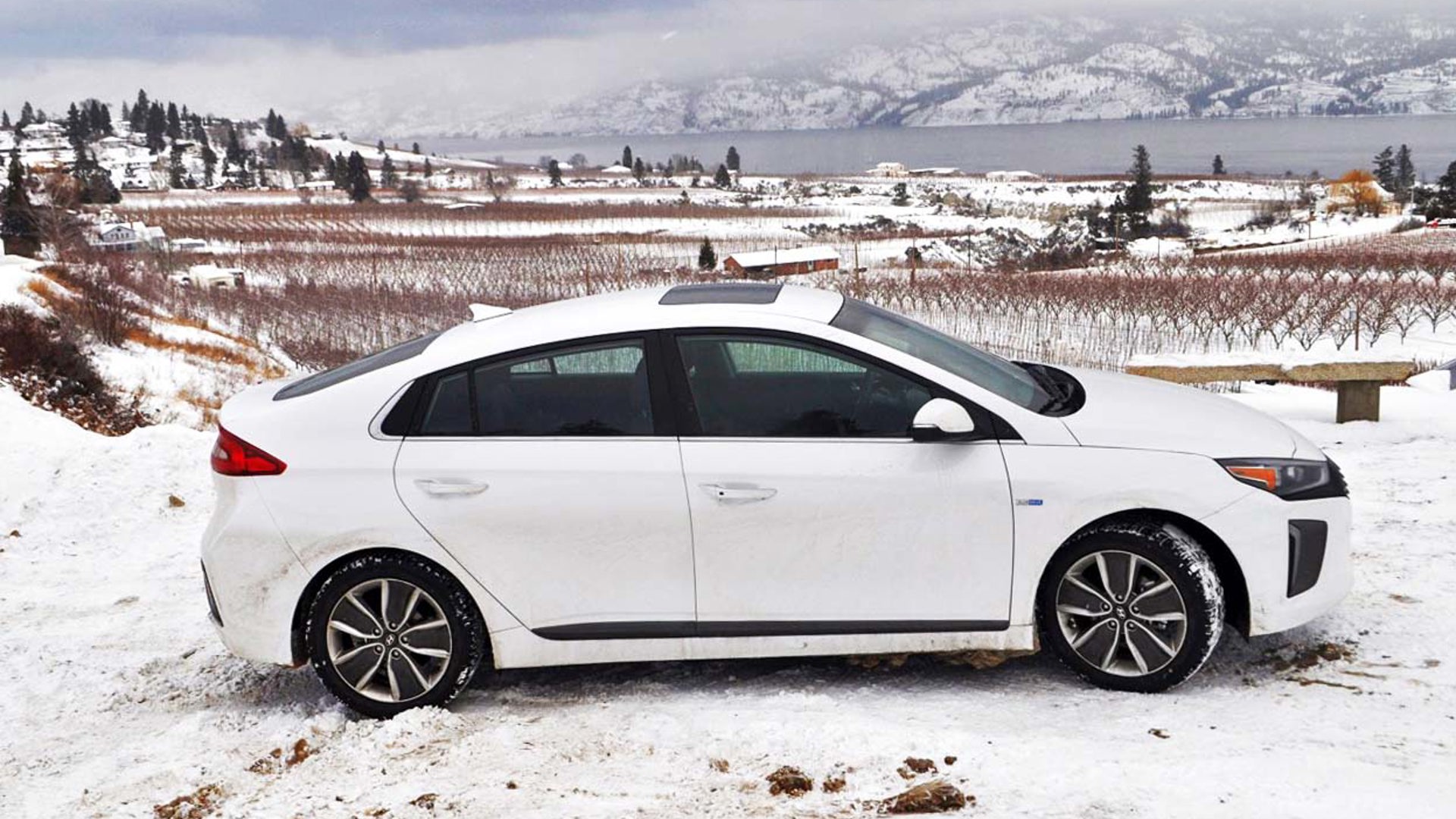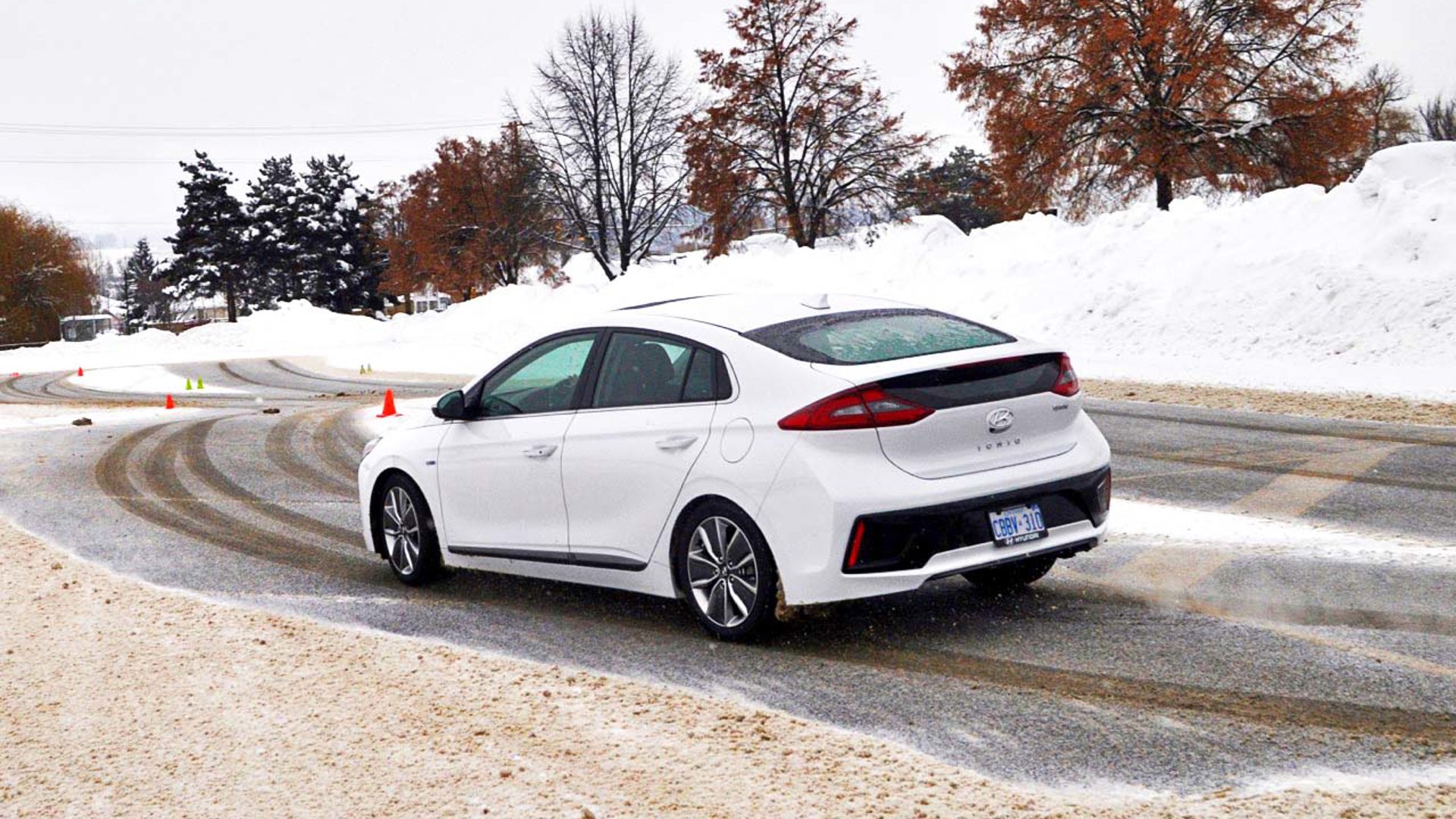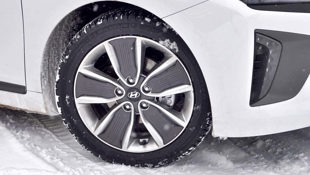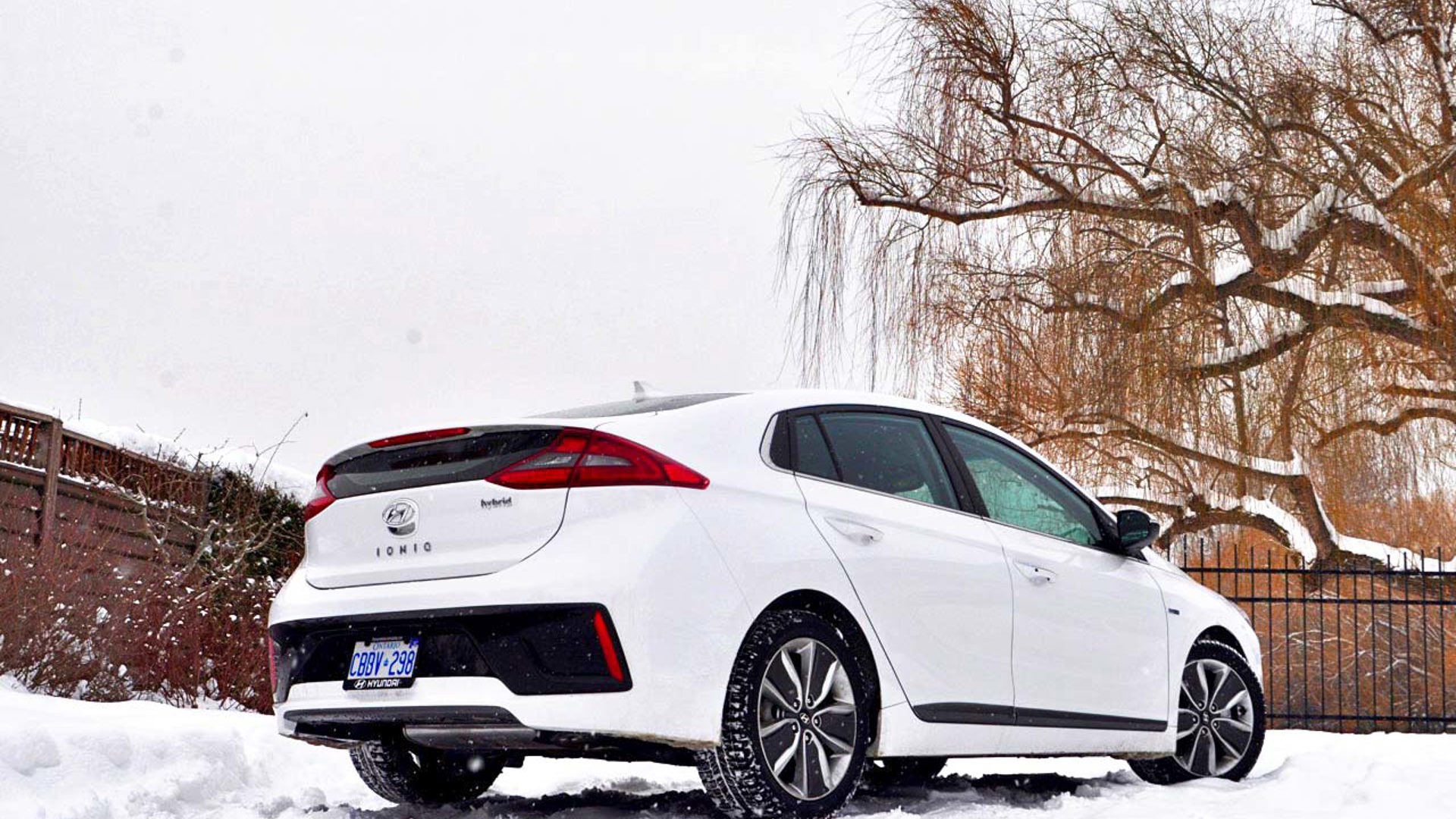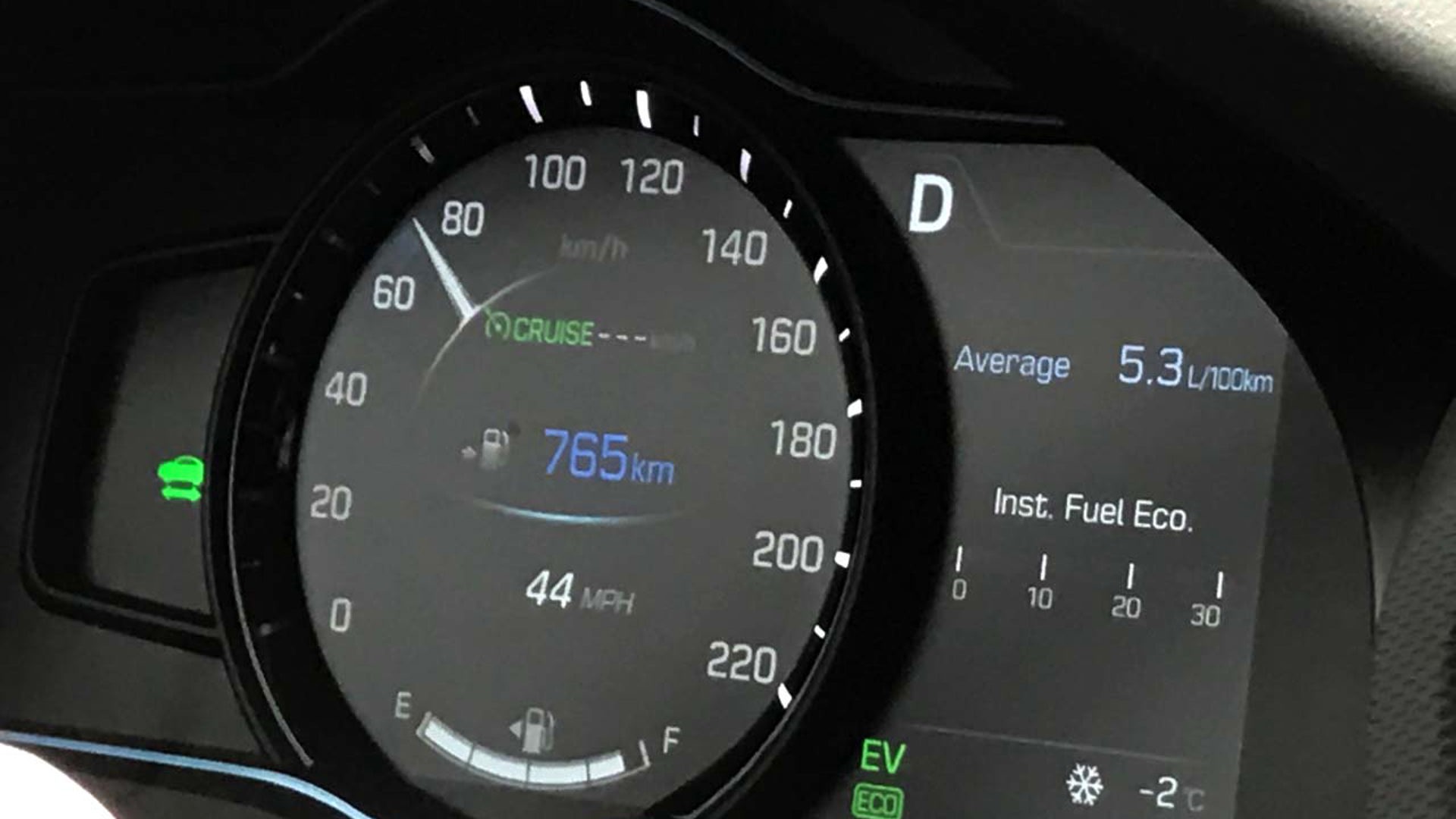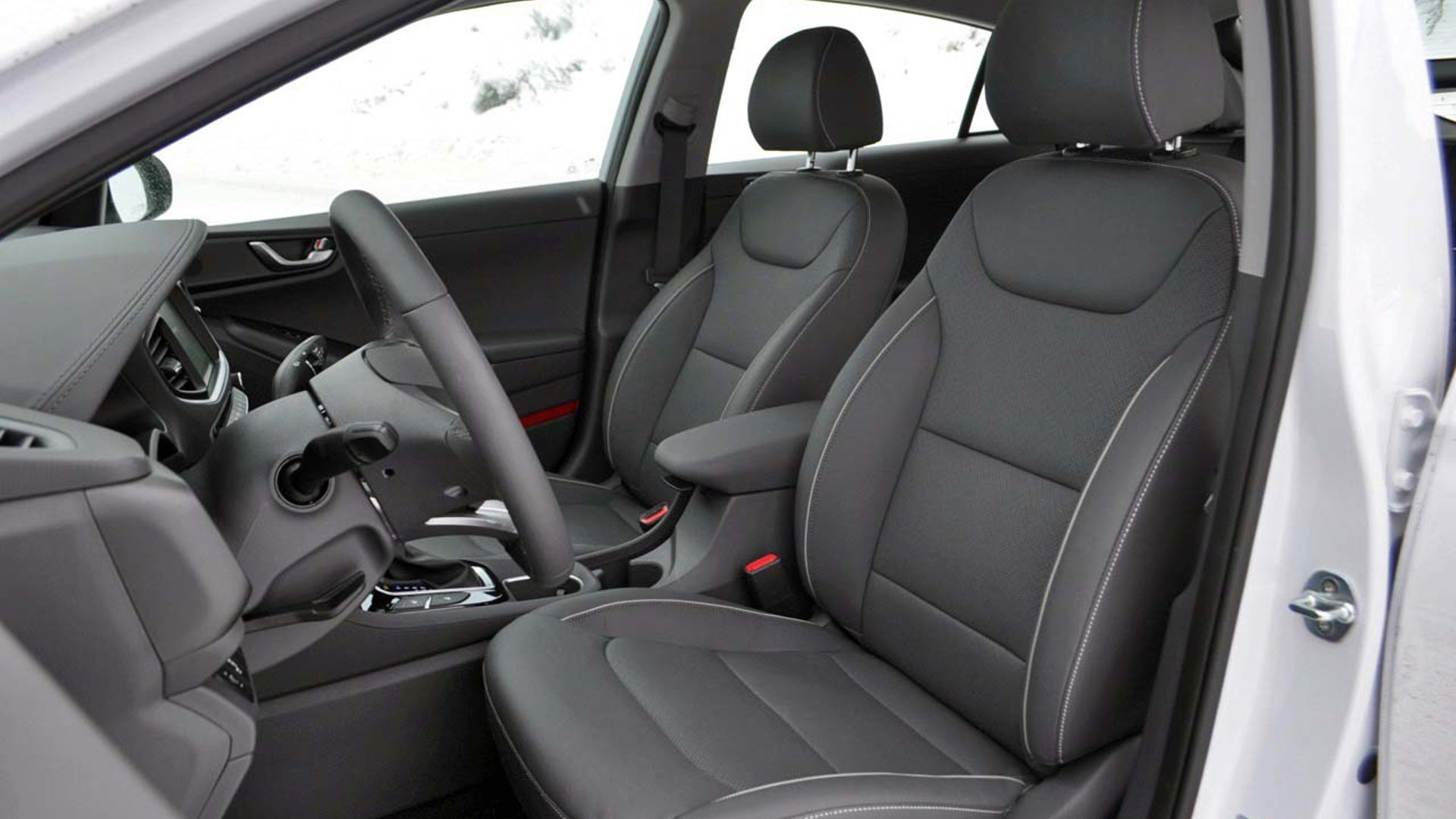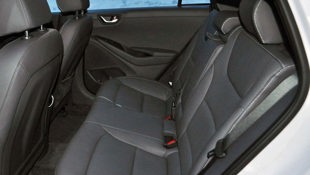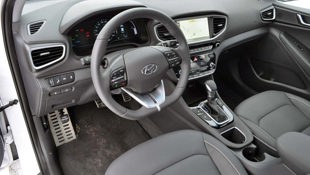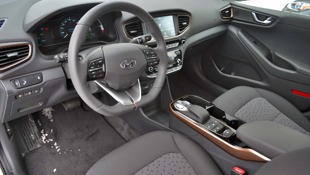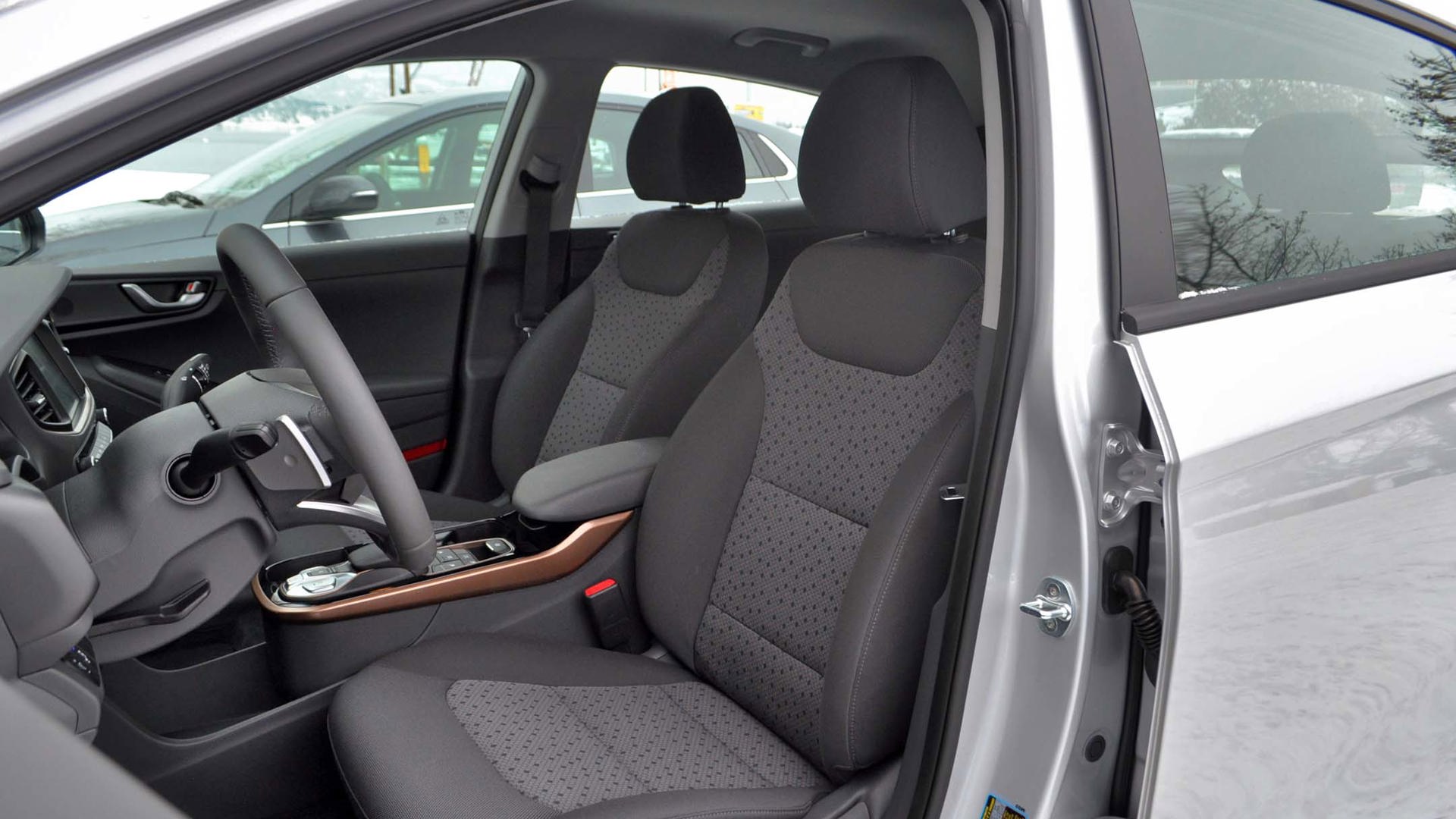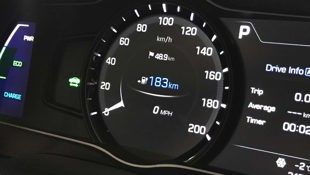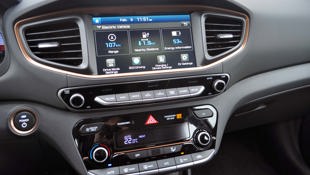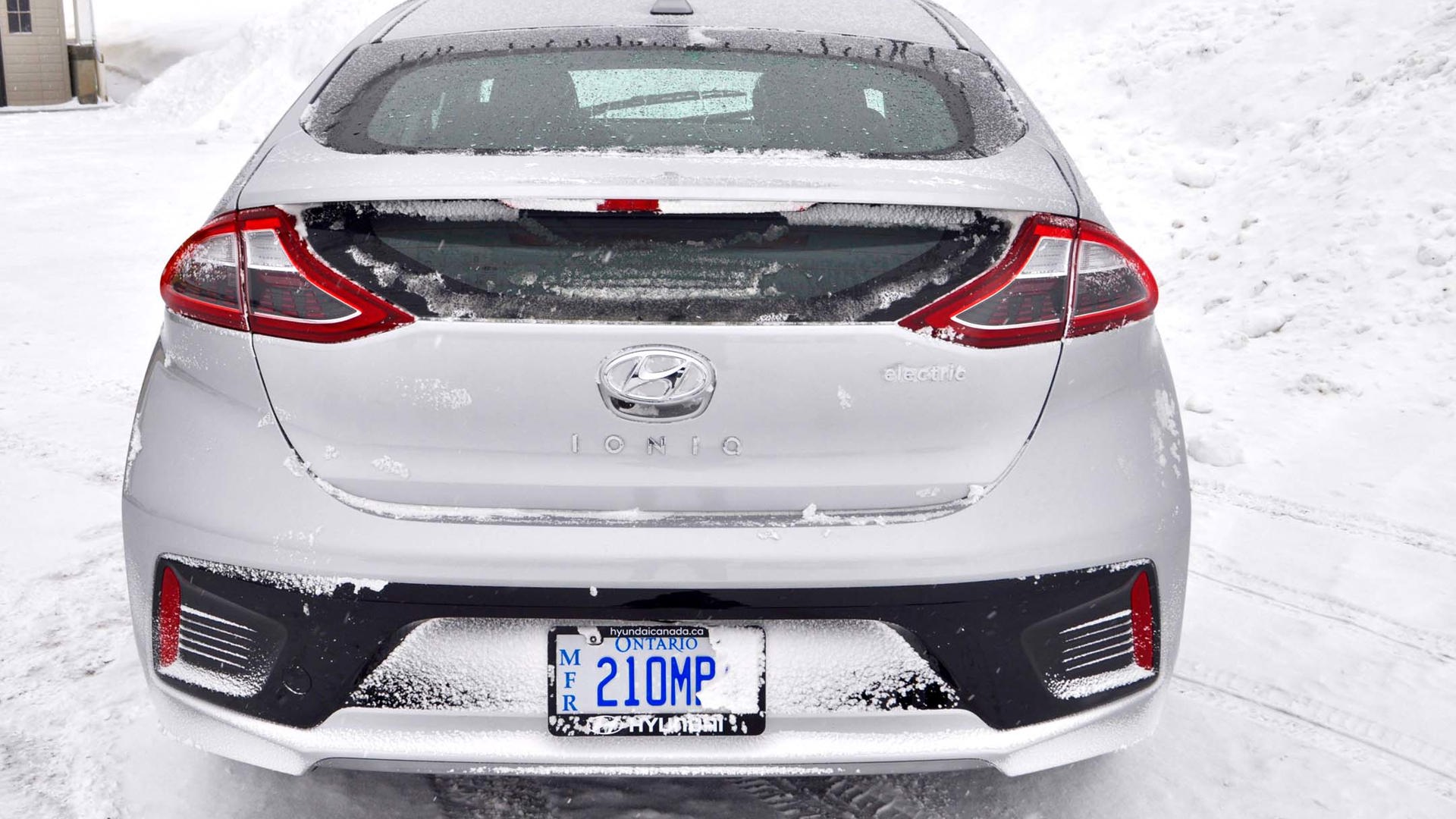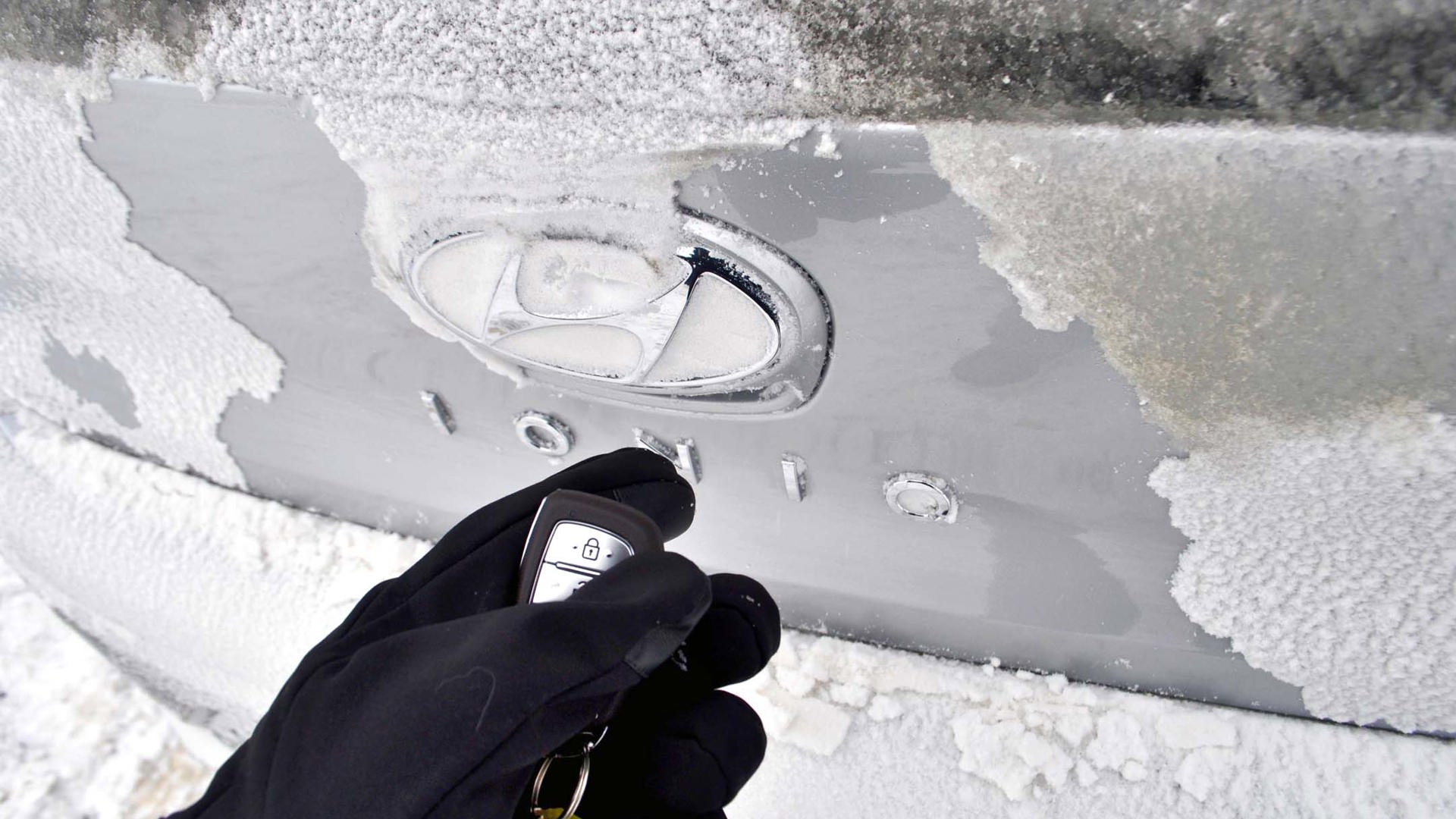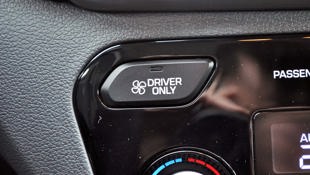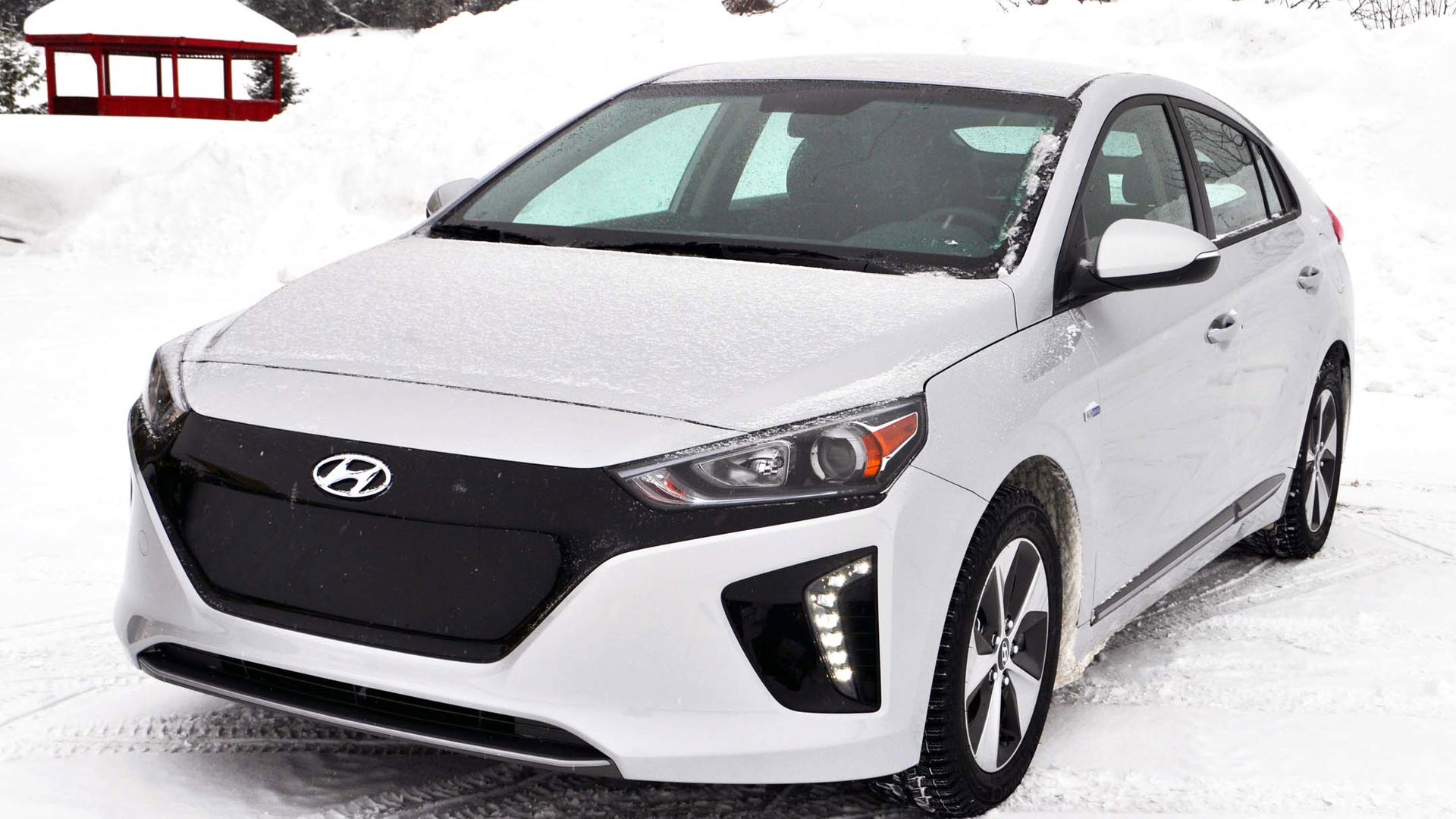Kelowna, BC – After cautiously dipping its toe into increasingly electrified cars with first hybrid and then plug-in hybrid versions of its Sonata sedan, Hyundai is finally making a more serious stab at the green car market with the all-new Ioniq Hybrid and no-gas-whatsoever Ioniq Electric hatchbacks.
Thus the Ioniq will be the Goldilocks of the electrified car world: offering slightly electric (Hybrid), medium electrified (Plug-in Hybrid) and all-Electric versions.
Perhaps not whole-heartedly, given their major investment but limited return in its fuel cell Tucson, but rather convincingly in this Ioniq, especially in hybrid form.
That Ioniq Hybrid squarely targets the market-leading Toyota Prius, a protracted 17 years after Toyota’s first gas-electric hybrid hit the North American market, eventually becoming a sales success for the company. Perhaps more importantly, it polished Toyota’s advanced technology and green credentials, even while it introduced an ever-increasing lineup of pickups and SUVs.
Hyundai certainly hopes its Ioniq will provide a similar brand and advanced technology ‘glow’ to the Korean firm, taking advantage of Toyota’s reluctance to expand beyond its pioneering hybrid models and into even more efficient plug-in hybrid or full electric models.
Thus the Ioniq will be the Goldilocks of the electrified car world: offering slightly electric (Hybrid), medium electrified (Plug-in Hybrid) and all-Electric versions.
The Ioniq Hybrid and Ioniq Electric officially go on sale in March, with the plug-in hybrid set to arrive in the fall as a 2018 model. Curiously, though, Hyundai is already marketing the Ioniq as a family of three, in part because the company believes that many consumers still don’t quite fully understand the differences between the three types of green cars, and how they differ.
It’s worth exploring the many different types of hybrid technologies available, and their advantages and disadvantages, but in the Ioniq’s case, here’s the Coles notes version:
- regular Hybrids never plug in, and are the least expensive, but also with the least amount of fuel efficiency payback;
- the Plug-in hybrid, as the name states, plugs into any outlet or most EV charging stations for extra efficiency (and super-quiet motoring while on electricity), but still offers a gas engine that allows drivers to travel long distances without lengthy recharge stops; however, PHEVs typically lose the most people and cargo space flexibility.
- the Electric Ioniq is the priciest (unless you’re in Ontario), has the lowest fuelling costs (by far), and is the only one that offers all-silent operation and zero-tailpipe emissions; but it can only travel roughly 200 km on a full charge (less in sub-zero temperatures), and takes the longest to charge its biggest battery.
Hyundai brought us to a surprisingly arctic and recently snowed in Kelowna BC to sample the Hybrid and the more limited volume Electric models. The cold and snowy temperatures meant Hyundai decided to equip both cars with winter tires (Michelin X-Ice Xi3) all around instead of the all-season Michelins that come standard on both (the Primacy MXM4 and Energy Saver A/S tires, respectively).
These stock tires provide a good clue to the different priorities of these Ioniqs – though visually near identical, they are indeed very much like identical twins with similar but distinct characteristics.
Ioniq Hybrid offers the most room for the lowest MSRP (likely)
Hyundai is pitching the Ioniq Hybrid as a sportier alternative to the Toyota Prius, but with a similarly sleek teardrop shape that’s much cleaner if less wildly distinctive (some might say futuristic, others scary) than the Toyota’s. The Ioniq Hybrid’s front end grille is replaced by a blank panel in the Electric version, but otherwise, both are similarly shaped, with only differently styled wheels, badging and the charging door to help tell them apart.
The Ioniq’s Atkinson-cycle 1.6-litre engine makes more power than the Prius, with 139 hp combined (including the 43 horses from the electric motor) versus the Toyota’s combined 121, and is the only hybrid to offer a 6-speed dual-clutch transmission, compared to the more common but less responsive CVT. This DCT brings with it a manual shift mode, though there are no shift paddles to play with, sadly, to keep all healthy 195 lb-ft of low-end torque easily accessible.
The company even laid out a small autocross course in an empty parking lot to allow for a few ‘hot laps’ of the Ioniq Hybrid on a snowy and frigid day on winter tires. In such conditions, the front-wheel drive Ioniq certainly didn’t beg to be driven enthusiastically, but it did seem to resist body roll until one pushed too hard, when safe but dreary understeer set in.
We also lamented the lack of a pull-up handbrake that could increase the snowy parking lot fun factor. Instead, the Hybrid has a foot-operated e-brake above its sporty aluminum footrest and pedals. Consumers may be even more shocked to see a flat-bottomed steering wheel in all Ioniq models, long a trademark of performance-minded machines, but likely more useful here in providing some extra legroom.
Is this the point where flat-bottom steering wheels jump the shark? Or will that come when some over-ambitious company puts one on a ‘Sport’ edition of an upcoming minivan?
Realistically, Ioniq Hybrid buyers will be more interested in its performance at the pump than on the dragstrip or autocross course. And in fuel efficiency, it excels, even past all versions of the Prius. The base Ioniq Blue’s combined EPA figure of 4.1 L/100km is less than any version of the Prius, which now makes the Ioniq the most efficient vehicle on the market without a plug.
The Ioniq also stacks up well to the Prius inside, where its platform also provides more interior passenger space than its Prius nemesis – so much more so that the Ioniq registers as a full-size car, a class up from the equivalent version of Toyota’s most famous hybrid.
The Hyundai is more conservatively styled inside as well, with available features such as heated seats front and rear, sunroof, adaptive cruise control and a heated steering wheel our afternoon in our mid-level trim Ioniq Hybrid a pleasant one. We did wonder what happened to the cooled seats that are available on the less expensive Accent, which seems like an oversight here.
Speaking of pricing, Hyundai Canada had not yet released specific pricing for any Ioniq as of the time of writing, but released an official estimate of about $24,000 to start, topping out at roughly $33,000 for the loaded Limited with Tech package. That price estimate undercuts the base $27,190 Prius by a few thousand, but the top end Ioniq may come in slightly higher. The volume Ioniq models will be priced in between those two, but that’s as specific as Hyundai was willing to go at the time.
Ioniq Electric impresses in all but range next to key rival Bolt
Usually finishing second is a laudable achievement. But when it comes to affordable battery electric vehicles (BEVs) and how far they can travel on a full charge, the Ioniq BEV is so far behind the class-leading Bolt that it only serves to highlight how impressive Chevrolet’s 383 km range is on the market right now. The Ioniq Electric’s 200 km of range may be the second highest of any non-Tesla, but it’s still trailing the Chevy massively in a segment where even Hyundai admits range and price are the two main criteria.
So if the Ioniq Electric can’t compete with the Bolt on range, price is where Hyundai will likely wage this battle hardest. Again, Hyundai Canada released estimates not specifics, but their numbers suggested its all-electric Ioniq will start around $35,000, and top out near $42,000 – right where the base price of the Bolt is now.
That seems like a tough ask on Hyundai’s part, frankly. But there are other advantages to the Ioniq Electric besides that ~$7,000 lower starting price.
For one, the Hyundai is a noticeably wider vehicle, with less inadvertent elbow rubbing with your passenger. The all-Electric Ioniq’s covered cargo area is also notably larger than the Bolt, which could make the IE the more comfortable and practical choice for families, even though the Bolt’s taller roofline and more SUV-ish styling helps give it back some family choice points.
With the chilly sub-zero temperatures and snow pounding the Kelowna area on our drive, we were able to measure how realistic those government numbers are, and the range of Hyundai’s first BEV in near worst-case scenarios.
And came away impressed.
We set off on a full charge showing 183 km of range available, at roughly -8 degrees Celsius. There was no hypermiling involved here, no efforts to squeeze out every last ounce of efficiency or range out of it. We drove it as most owners would in real Canadian winter conditions: heat on, heated seats and steering wheel going, tunes pumping, the works.
In total, we traveled 70 km on our test route, over a mix of mountain roads and some city driving. Maximum speed was roughly 90 km/h but no highway driving, which tends to eat up battery quicker than regen-heavy city driving. We also realized later that we had the climate control in an Eco setting that will limit the amount of draw the system will put on the battery, though we never felt like the system gave us less heat than requested. There’s also a driver-only setting for the climate control, which preserves juice by aiming all climate requests solely to the driver, not the rest of the car.
By the end of our 70 km drive, our remaining range stood at 107 km, just a few clicks below the 113 km our starting range estimate suggested we would be at this point. So I’m fairly confident that this car could have easily gone 170 km in total in these powdery conditions. That’s a mighty accurate system there.
Helping us generate some extra efficiency/kilometres of range became a game, not a worrisome bother. Surprisingly, there were paddles behind the steering wheel on this Ioniq, but these controlled a unique four-stage level of regenerative braking that control how much you want the car to slow down once you lift your foot off the accelerator.
So left paddle was for more regeneration (and slowing down), right paddle eased off, to the point where there was no regen, and drove just like a regular car, which I usually prefer. The highest regen setting easily allowed the driver to practice one pedal driving: lift your foot, and the strong regen slows you down right away while sending what would have been waste heat to the battery as extra juice.
This was a godsend on steep declines on icy roads we encountered with the snow coming down, allowing you to feel like you’ve just downshifted into second to go down a treacherous hill safely.
The extra-quiet all-electric operation of a BEV is easily the most distinctive driving difference of this car to its Hybrid sibling, giving the Ioniq Electric the feel of a mini-Rolls-Royce out for a stroll. But there were other notable changes inside, including a revised ‘shifter’ that used only buttons instead of an actual lever to choose P, R, N or D. The console also featured a nearby electronic parking brake, unlike the Hybrid’s foot pedal.
And don’t forget when it comes to the Ioniq Electric, it’s eligible for some major government rebates, especially in Ontario ($14,000 off) but also in Quebec ($8,000) and BC (up to $11,250, if you retire your current car). This brings the starting price of the Ioniq Electric in Ontario down below that of a base Hybrid, and because the rebate applies after the HST is added on, a base Ioniq Electric would ring in at $25,550 after taxes. So any driver looking at an Ioniq in any of these three provinces – but especially in Ontario – should give the BEV some close consideration, if they don’t need the Bolt’s super long range.
Both Ioniqs offer a healthy suite of advanced safety features, including autonomous emergency braking with pedestrian detection system, which will bring the car to a full stop if it detects cars, people or objects approaching at a high rate of speed. There’s also a unique Lane Change Assist function that is like blind spot monitoring, but instead of only looking for folks in your blindspot, also warns of drivers rapidly approaching your blind spot.
Some annoyances are sadly common too though. While the split rear window aids in visibility, there’s no wiper available for the top part of the glass, as most hatchbacks have. This resulted in very poor visibility out the rear when snow was coming down, and made us wish for an electronic camera view out the back, as offered on the Bolt.
Also, the key fob seems to be one used on Hyundai’s crossover products, as there’s a button depicting a hatch going up. But hit that button, and it merely unlocks the rear hatch release. Meanwhile, rivals like the Ford C-Max and C-Max Energi plug-in not only offer a powered rear hatch, but also a way to magically open and close it by sweeping your foot underneath the rear bumper.
Conclusion: Honest effort on Hybrid, weak one on Electric
Hyundai has put a seriously competitive product forward with the Ionic Hybrid, but less so with the Electric version, with its now-puny 28 kWh battery and slightly smaller cargo area. The Hybrid will be available at every Hyundai dealer, while the more limited production Ioniq Electric is planned right now only for roughly 30 dealerships in Canada, said the company, though more may be added later.
Frankly, Hyundai’s heart seems more into fuel cell vehicles rather than hybrids or plug-in electric vehicles of any type – they’re obviously not a leader in these spaces, especially compared to the Toyota Prius and Chevrolet Bolt, respectively. But at least they’re now seriously in the clean sheet-designed electrified market, with the potentially most impressive version still to appear this fall in the Ioniq Plug-In Hybrid.
Pricing (estimated)
Hyundai Ioniq Hybrid
Blue: ~$24,000
SE (40% volume trim): $TBC
Luxury (30% volume roughly): $TBC
Limited with Technology Package ~$33,000
Hyundai Ioniq Electric (not including provincial rebates)
SE (10% expected volume): ~$35,000
SE with Cold Climate Package (75% expected volume): ~$36,000
Limited (15% expected volume): ~$42,000
Provincial Rebates/Incentives
Ontario
- Ioniq Electric: $14,000 towards purchase (after taxes)
- $1,000 towards purchase and installation of Level 2 (240V) charging station
- Green plate for free HOV/HOT access
Quebec
- Ioniq Electric: $8,000 towards purchase
- $1,000 towards purchase and installation of Level 2 (240V) charging station
- Green plate for free HOV access
- Ioniq Hybrid: $500 towards purchase
British Columbia
- $5,000 towards purchase
- Up to $6,250 in ‘ScrapIt’ rebate, if you scrap vehicle when trading in on new BEV (or until 500 rebates allocated in 2017; check status at https://scrapit.ca/incentivechoices)
